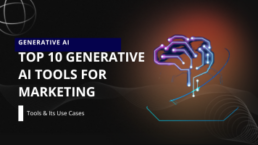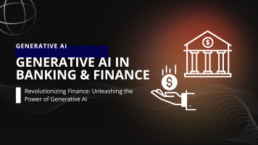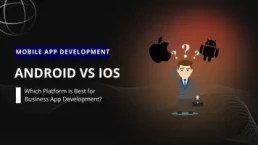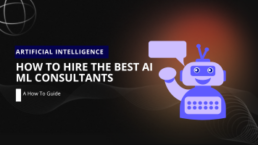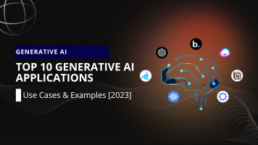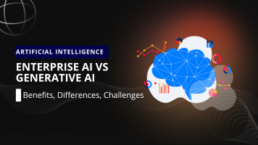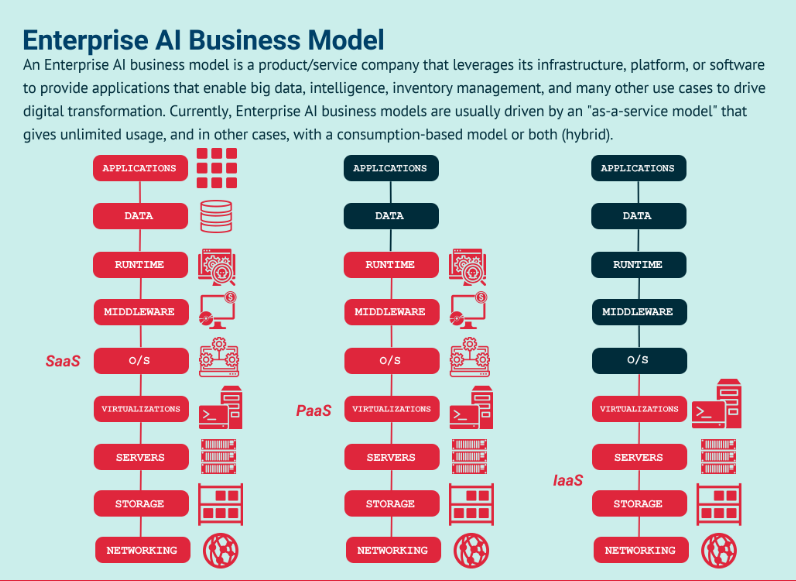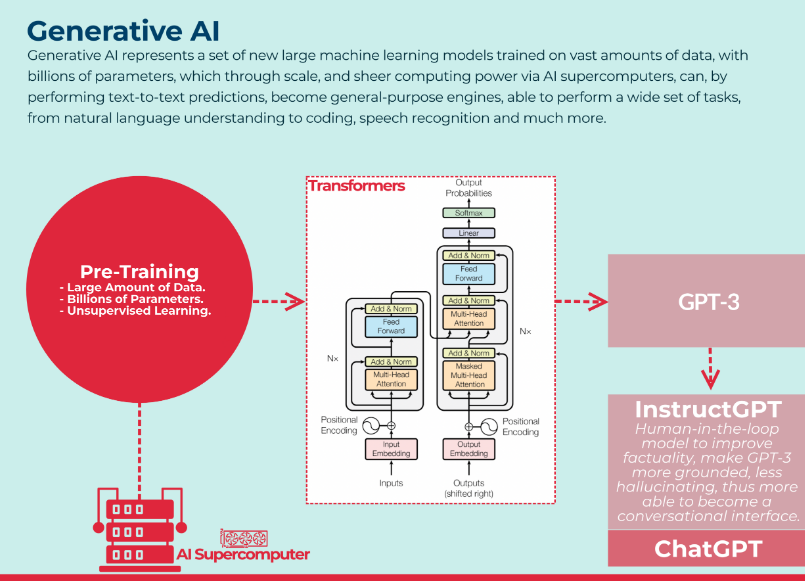Top 10 Generative AI Tools for Marketing in 2024 & its Use Cases
Generative AI Tools for Marketing
In the ever-evolving landscape of digital marketing, the emergence of generative AI has revolutionised content creation, personalization, and audience engagement. With the rapid proliferation of large language models (LLMs) such as ChatGPT and DALL-E, the marketing industry has witnessed an unprecedented level of automation and creativity.
Generative AI, the next generation of artificial intelligence, enables marketers to harness the power of automation and data-driven insights to create unique and tailored content for their target audience. In this blog post, we will explore the top 10 generative AI tools that are making waves in 2024 and their wide range of applications in the field of marketing.
From leveraging brand guidelines and maintaining the desired tone of voice to providing personalized insights and driving customer loyalty, these tools have the potential to redefine how we approach marketing strategies. Moreover, we will also delve into the continued importance of the human touch for achieving marketing success, even in the era of advanced generative AI technology.
According to a 2023 study conducted with marketers in the United States, 73 percent of respondents reported using generative artificial intelligence tools, such as chatbots, as a part of their company's work. The emergence of Generative AI has opened up new frontiers in marketing, enabling businesses to craft content at scale while freeing up valuable time and resources.
Let's dive into the world of generative AI and discover the tools that can elevate your marketing efforts to new heights.
Key Takeaways
-
- Generative AI is a powerful tool for content creation, personalization, and campaign optimization in marketing.
- Generative AI can enhance customer engagement, improve sales forecasting, and drive conversions.
- Use cases of generative AI in marketing include chatbots, visual/audio content generation, market research, and predictive analytics.
- Prominent generative AI tools for marketing include OpenAI's GPT-4, Artbreeder, RunwayML, DALL-E, Prompts.ai, etc.
- Generative AI tools offer benefits such as improved customer engagement and retention, and optimized marketing campaigns.
- Generative AI has the potential to revolutionize marketing with valuable market insights, and tailored customer experiences.
- The future of generative AI in marketing holds immense potential for advancements in natural language processing and image recognition.
Generative AI In Marketing: Use Cases
Generative AI is a powerful tool that has the potential to revolutionize the way marketers approach their work.
From personalising marketing content to creating visuals and videos for campaigns, Generative AI has numerous applications that can enhance customer engagement and improve sales forecasting.
This section will explore some of the most common use cases of Generative AI in marketing.
-
Content Creation and Curation
Generative AI has revolutionised content creation and curation in marketing.
It enables marketers to generate high-quality, engaging content efficiently, ranging from blog posts to social media captions and product descriptions.
This way marketers can save time and maintain a consistent brand voice, while also curating relevant and creative content that resonates with their target audience.
-
Personalization and Recommendation
Generative AI empowers marketers to deliver personalised experiences at scale.
With this, marketers can analyse customer data can create personalised recommendations, tailored offers, and targeted advertisements.
This level of personification enhances customer satisfaction, drives engagement, and fosters long-term loyalty.
-
Chatbots and Virtual Assistants
Generative AI plays a crucial role in enhancing chatbots and virtual assistants, making them more intelligent and capable of simulating human-like conversations.
These conversational agents can provide instant and personalized customer support, answer frequently asked questions, and assist customers in making informed purchasing decisions.
-
Visual and Audio Content
Generative AI extends its capabilities beyond text-based content to visual and audio content.
With advanced deep learning algorithms, generative AI can generate realistic images, videos, and audio clips.
Marketers can leverage this technology to produce visually stunning advertisements, personalised video content, and engaging multimedia experiences that captivate their target audience.
-
Social Media Marketing
Generative AI helps marketers in creating engaging and shareable content for social media platforms.
This technology analyses social media trends and user-generated content to generate relevant and captivating social media posts, hashtags, and captions.
It also allows marketers to drive user engagement, increase brand awareness, and foster connections with their target audience on social media.
-
Customer Engagement and Retention
Generative AI enables marketers to enhance customer engagement and retention strategies by providing personalised communication.
It generates personalised messages, emails, and offers based on customer interactions, preferences, and feedback.
This level of personalization strengthens customer relationships, increases satisfaction, and drives repeat business.
-
Search Engine Optimization (SEO)
Generative AI assists marketers in optimising their content for search engines by generating SEO-friendly meta tags, headlines, and descriptions.
Search engine optimization algorithms generate optimized content based on search trends and keyword data.
This helps marketers increase organic visibility, drive targeted traffic to their websites, and improve their overall SEO strategy.
-
Ad Optimization
Generative AI optimises advertising campaigns by analysing ad performance data and generating recommendations for improved targeting and ad creatives.
Marketers can leverage generative AI to optimize ad placements, targeting options, and ad copy.
This enhances the effectiveness of ad campaigns, increases click-through rates, and maximises return on ad spend.
-
Market Research and Insights
Generative AI streamlines market research by analyzing vast amounts of data from multiple sources. It identifies emerging trends, customer preferences, and market opportunities.
Marketers can leverage generative AI to gain insights into their target audience, competitors, and industry landscape.
This knowledge enables data-driven decision-making, effective marketing strategies, and a competitive edge in the market.
-
Predictive Analytics
Generative AI analyzes historical data to make predictions about future outcomes.
In marketing, predictive analytics powered by generative AI assist in forecasting customer behavior, demand patterns, and campaign performance.
Marketers can make data-backed predictions to optimize strategies, allocate resources effectively, and drive higher conversion rates.
-
Sales Forecasting and Optimization
Generative AI contributes to sales forecasting and optimization efforts by analyzing historical sales data and market trends. It generates accurate sales forecasts and identifies areas for improvement.
Marketers can leverage generative AI to optimize pricing strategies, predict demand fluctuations, and improve overall sales performance.
Generative AI Tools for Marketing in 2024
Generative AI has become an essential tool in modern marketing, allowing businesses to create personalized content, optimize their ad campaigns, and make informed decisions based on data-driven insights.
These tools can help businesses improve customer engagement and retention, SEO, ad optimization, market research, and sales forecasting.
With the help of generative AI, businesses can gain a competitive edge and stay ahead of the curve in the fast-paced world of marketing.
1. OpenAI's GPT-4
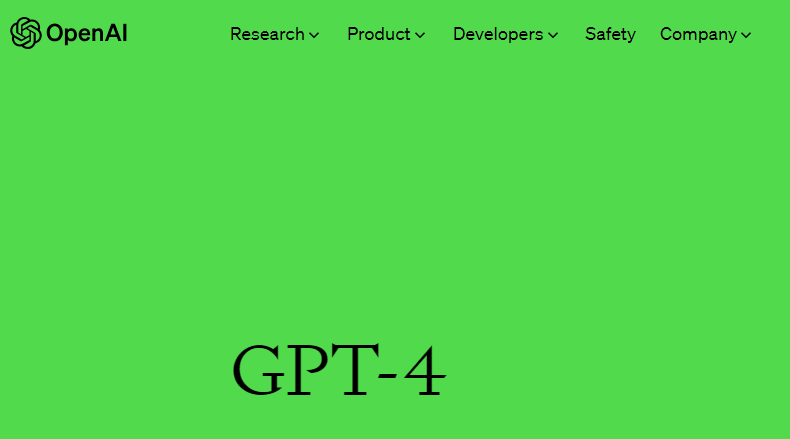
OpenAI's GPT (Generative Pre-trained Transformer) has become a popular tool in the field of marketing due to its ability to generate high-quality, natural-sounding text. GPT-3 and GPT -4 can be used to create engaging content for social media, websites, and other marketing channels, without the need for human intervention. This can save businesses time and resources, while still providing personalized and relevant content to their customers. GPT-3 and GPT-4 can also be used for SEO optimization, ad optimization, market research, and predictive analytics, helping businesses make data-driven decisions and stay ahead of the competition. Overall, OpenAI's GPT-3 and GPT-4 is a powerful tool for any marketing team looking to improve their content creation process and enhance customer engagement.
Features:
- High level of accuracy
- Versatile and scalable
- Ability to generate personalized content
- Optimized for SEO
- Powerful automation capabilities
- Wide range of applications
- Natural language processing at scale
- Cutting-edge artificial intelligence technology
2. Artbreeder
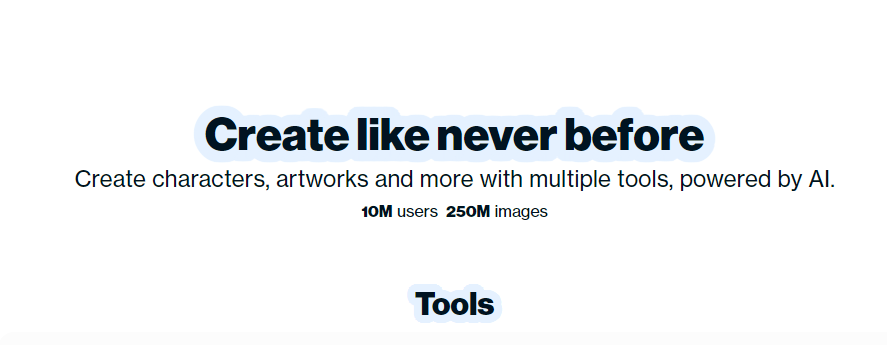
Artbreeder is a cutting-edge generative AI tool that has gained popularity among marketers for its ability to create visually stunning content. It
generates unique images by blending different images together, resulting in an infinite variety of original designs.
Marketers can use Artbreeder to create custom graphics, logos, and other visual content for their campaigns. This tool is especially useful for brands that want to stand out from the crowd with distinctive and eye-catching visuals.
Artbreeder is intuitive and easy to use, making it accessible to marketers of all skill levels. Its ability to generate new and innovative designs can help businesses improve their branding, engage customers, and increase their online visibility.
Features:
- Customizable design options
- High-resolution outputs
- Community sharing and collaboration
- Easy-to-use interface
- Blend and morph images
- Infinite design possibilities
- Realistic and surreal styles
- Instant previews of design iterations
3. RunwayML
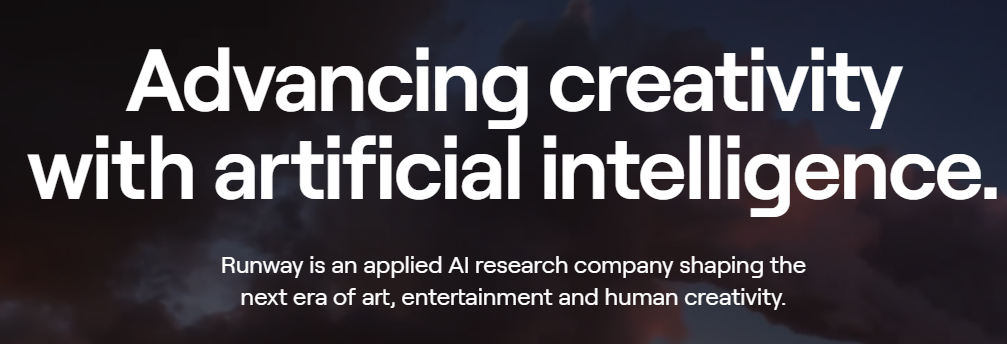
RunwayML is a cutting-edge generative AI platform that is gaining popularity among marketers for its ability to create engaging content and optimize ad campaigns.
This AI-powered tool offers a user-friendly interface that allows even non-technical marketers to create custom models, automate tasks, and generate content with ease.
RunwayML's pre-trained models can analyze vast amounts of data and generate insights that can inform marketing decisions, such as predicting customer behavior and optimizing ad campaigns.
Its real-time image and video processing capabilities can help businesses create visually stunning content that resonates with their target audience. With RunwayML, marketers can leverage the power of AI to stay ahead of the curve and deliver personalized, engaging content to their customers.
Features:
- User-friendly interface for easy model creation.
- Real-time image and video processing capabilities.
- Pre-trained models for fast data analysis.
- Automation of repetitive marketing tasks.
- Custom model creation for personalized solutions.
- Integration with various programming languages.
- Supports diverse data inputs and outputs.
- Collaborative platform for team workflows.
- Continuously updated with new features and models.
4. DALL-E
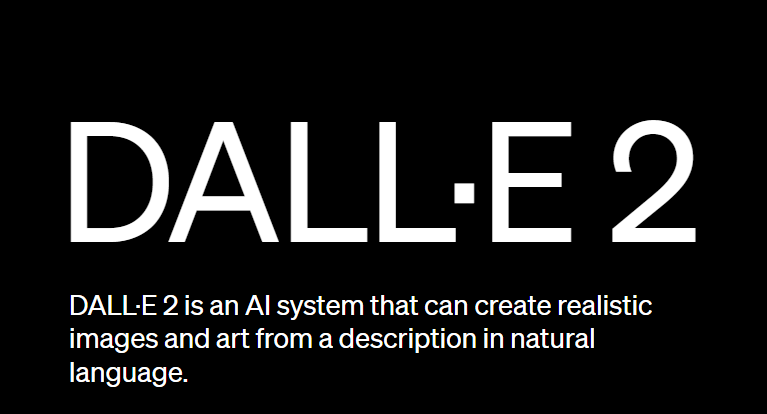
DALL-E has enormous potential for marketing, as businesses can use it to create customized images that resonate with their target audience.
With DALL-E, businesses can generate high-quality images for their marketing campaigns that are specific to their brand and message.
It can create product images, social media posts, and advertising banners that are more visually appealing and engaging.
Moreover, DALL-E can help businesses save time and resources by automating the image creation process, allowing them to focus on other aspects of their marketing strategy.
Features:
- Custom image creation from textual descriptions.
- Unique and personalized images for businesses.
- Time-saving and efficient image creation.
- Increased visual appeal and engagement.
- Automates image creation process.
- Versatile use for various marketing campaigns.
- Improves brand recognition and messaging.
- High-quality and professional image output.
- Revolutionary and game-changing AI technology.
I would like to draw your attention to Code Conductor, a revolutionary no-code development platform, deserves a spot on our list for its remarkable impact on marketing automation and creativity. This innovative platform enables marketers to build and deploy applications without any coding expertise, streamlining their marketing efforts.
Code Conductor's intuitive interface, coupled with its extensive library of components, empowers marketers to unleash their creativity and bring innovative marketing ideas to life without relying on developers. With this platform, you can achieve faster time-to-market and stay ahead of the competition.
To explore more about the Code Conductor platform, visit Code Conductor.
5. Prompts.ai
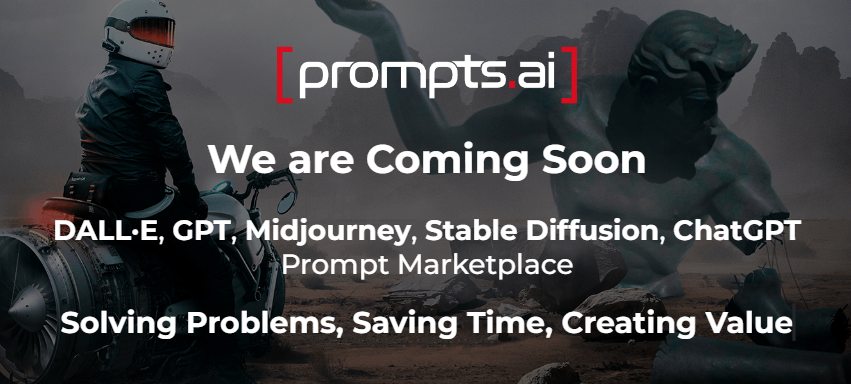
Prompts.ai is a generative AI tool that is specifically designed for marketing applications. This tool can help businesses create high-quality content in a matter of minutes, saving them time and resources.
With Prompts.ai, marketers can generate blog posts, social media content, email newsletters, and more, tailored to their specific target audience.
The tool uses advanced natural language processing (NLP) algorithms to analyze customer data and create personalized content that resonates with them. It can also optimize ad campaigns, improve SEO, and provide valuable market insights.
Features:
- AI-generated personalized content.
- Optimized for social media.
- Saves time and resources.
- Advanced natural language processing.
- Improves SEO and ad campaigns.
- Provides market insights.
- Compatible with various content formats.
- Easy to use and integrate.
6. Phrasee
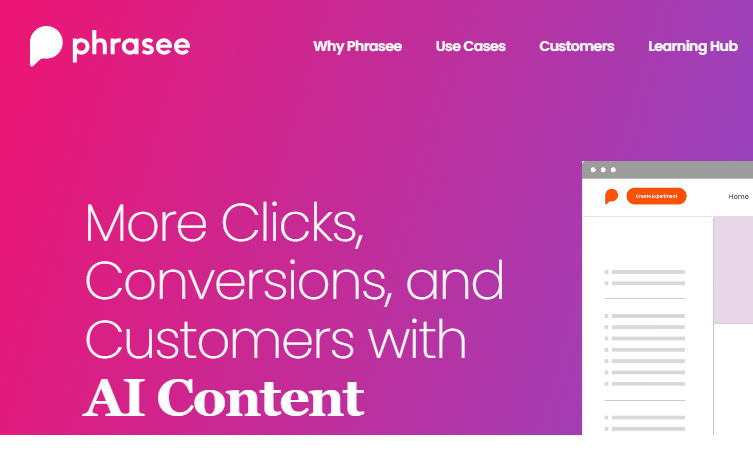
Phrasee is a cutting-edge generative AI tool that specializes in creating compelling and effective marketing language.
It analyzes vast amounts of data using advanced algorithms and machine learning techniques to identify patterns and generate language that resonates with target audiences. It can be used to create engaging email subject lines, social media posts, and ad copy.
With Phrasee, businesses can improve their customer engagement and conversion rates while saving time and resources on manual copywriting. Several leading brands have used it successfully, including Domino's Pizza, eBay, and Virgin Holidays.
Features:
- Improves engagement and conversion rates.
- Optimizes email subject lines and ad copy.
- Analyzes data to generate effective language.
- Used by leading brands.
- Saves time and resources on copywriting.
- Drives result and boost revenue.
- Personalized language tailored to target audience.
- Easy to use with simple integration.
7. Valossa
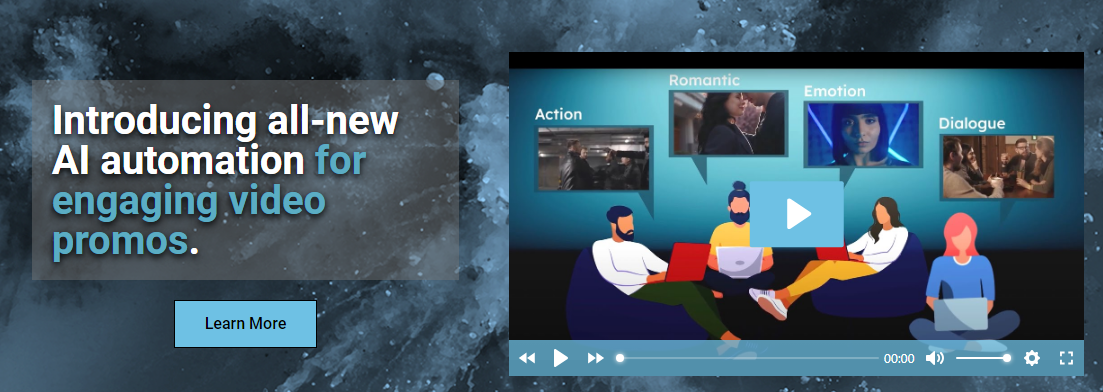
Valossa is a leading company that specializes in AI-powered video analysis and recognition for marketing. Their cutting-edge technology allows businesses to analyze video content and extract valuable insights to optimize their marketing strategies.
With Valossa, businesses can easily identify the most engaging parts of a video, track the emotional responses of viewers, and gain a better understanding of their target audience.
Valossa's AI algorithms can also detect brand logos, product placements, and other key elements in videos, providing businesses with valuable data on the effectiveness of their branding and advertising efforts.
With Valossa's advanced video analysis and recognition capabilities, businesses can make data-driven decisions and stay ahead of the competition in the fast-paced world of marketing.
Features:
- AI-powered video analysis and recognition
- Extract valuable insights from video content
- Identify most engaging parts of a video
- Track emotional responses of viewers
- Detect brand logos and product placements
- Gain an understanding of the target audience
- Make data-driven decisions for marketing strategies
- Stay ahead of the competition with advanced technology
- Optimize branding and advertising efforts.
8. RefineAI
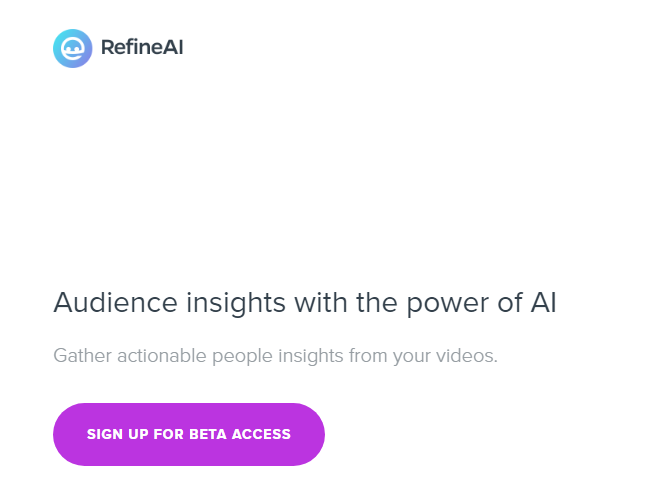
RefineAI is an AI-powered video marketing platform that enables businesses to optimize their video content for maximum engagement and impact.
The platform uses deep learning algorithms to analyze video content and provide real-time insights into viewer engagement, sentiment, and behavior.
With RefineAI, businesses can identify the most engaging parts of their videos and optimize them for increased engagement and conversions.
The platform also provides valuable data on viewer demographics, allowing businesses to tailor their video content to specific audiences.
Features:
- Actionable insights from video content.
- Automated analysis and optimization of video ads.
- Real-time video analytics with AI.
- Improved engagement with personalized video recommendations.
- Advanced emotion and sentiment analysis.
- Optimize video performance with data-driven decisions.
- Intelligent video content tagging and organization.
- AI-powered visual search and discovery.
- Enhance brand safety with video moderation.
9. Lumen5

Lumen5 is an innovative marketing tool that utilizes AI to create engaging video content. With Lumen5, businesses can turn blog posts, social media posts, and other written content into captivating videos in just a few minutes.
The tool uses natural language processing to identify key phrases and summarize the content and then suggests visuals and music to match.
Lumen5 also offers a user-friendly interface that allows users to customize their videos with text, images, and branding elements.
This makes it an excellent tool for creating videos for social media, website landing pages, email marketing, and more. With Lumen5, businesses can quickly and easily create compelling video content that drives engagement and conversions.
Features:
- AI-powered video creation.
- Instant video previews.
- User-friendly interface.
- Customizable branding elements.
- Access to a large media library.
- Automated text-to-video conversion.
- Quick video editing and revision.
- Social media sharing capabilities.
- Analytics tracking and reporting.
10. PhotoRoom

PhotoRoom is a versatile and innovative tool that revolutionizes the way you edit photos. With its advanced AI technology, PhotoRoom allows you to remove backgrounds from images effortlessly, instantly giving your visuals a professional touch.
Whether you're a graphic designer, e-commerce entrepreneur, or social media enthusiast, PhotoRoom offers a seamless experience by automatically detecting objects and isolating them from their backgrounds. It also provides a wide range of editing features, allowing you to customize and enhance your images with ease.
PhotoRoom's intuitive interface and powerful capabilities make it the ultimate companion for anyone looking to create stunning visuals without the need for complex software or extensive editing skills.
Features:
Instant Object Isolation
Powerful AI-Powered Editing
Background Removal in Seconds
Customizable Image Enhancements
Seamless and Intuitive Interface
Versatile Editing Tools
Professional-Quality Visuals
How Generative AI Will Impact Marketing in The Future?
The future of generative AI in marketing looks incredibly promising. As technology continues to advance, we can expect even more sophisticated AI models capable of generating hyper-targeted content tailored to individual customers.
This level of personalization and efficiency will undoubtedly have a profound impact on marketing strategies, enabling businesses to connect with their audiences in more meaningful ways.
Furthermore, generative AI enables marketers to tailor their messaging to specific target audiences, ensuring that the content resonates with customers on a deeper level.
Artificial intelligence algorithms are capable of uncovering valuable market trends and consumer preferences through the analysis of vast amounts of data. This wealth of information empowers marketers to craft highly relevant and personalized campaigns that drive better customer engagement and conversion rates.
In addition, generative AI opens up new possibilities for hyper-personalization, allowing marketers to deliver customized experiences that meet individual customer needs. Through AI-driven recommendation engines, marketers can provide personalized product suggestions, targeted advertisements, and tailored offers, creating a more personalized and tailored customer journey.
In the future, as generative AI continues to evolve, we can expect even more advancements in areas such as natural language processing, image recognition, and predictive analytics. These advancements will further enhance marketers' ability to create compelling, relevant, and personalized content that captivates audiences and drives business growth. With generative AI as a powerful ally, the future of marketing holds immense potential for innovation, efficiency, and customer-centricity.
Wrapping Up
Generative AI is revolutionizing the marketing landscape, empowering marketers with automated content creation, personalized messaging, and enhanced customer experiences. If you're interested in creating your own Generative AI Tools, RedBlink has a team of ChatGPT developers who can help you achieve your objectives.
To explore the benefits of generative AI in marketing, businesses can seek the expertise of RedBlink, a leading generative AI consulting service.
Embrace the power of AI-driven marketing strategies and stay ahead in this dynamic digital age. Visit our page dedicated to Generative AI for more information.
Ready to leverage the power of generative AI in your marketing campaigns? Contact RedBlink Technologies, the leading Generative AI development company in Silicon Valley, to explore how AI-driven strategies can revolutionize your marketing efforts. Hire ChatGPT developers, Machine Learning engineers on hourly or monthly basis. You can explore our Generative AI blog posts to learn more and stay ahead in the dynamic digital age. Embrace the future of marketing today!
Role of UI/UX Design in Android App Development
UI/UX Design in Android App Development
In the ever-evolving and competitive digital world, mobile applications have emerged as a pivotal device for businesses seeking to forge connections with their customer base and attain exponential growth.
Android applications, in particular, proffer a vast user base and a thriving ecosystem for businesses to tap into. However, the development of an Android app that not only fulfills functional requisites but also captivates users and propels business triumph necessitates meticulous contemplation of User Experience (UX) and User Interface (UI) design.
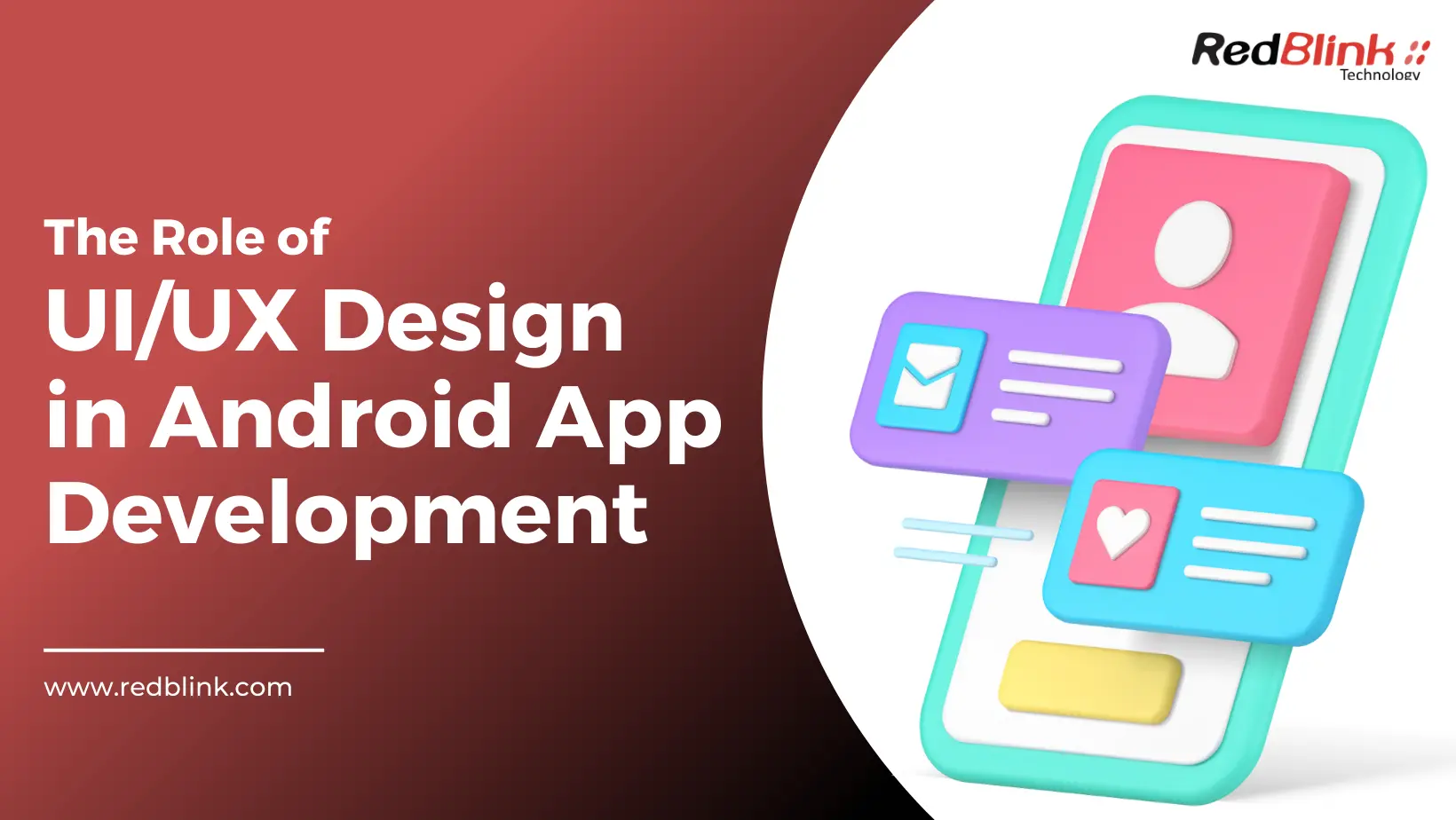
The significance of UI/UX design in the domain of Android app development cannot be overstated, especially for businesses aiming to distinguish themselves from the crowd and deliver exceptional experiences to their customers. A well-designed app not only amplifies usability but also fosters affirmative user interactions amplifies engagement, and ultimately engenders customer satisfaction and unwavering loyalty.
Key Facts:
Let's look at some of their stats:
- 86% of marketers consider improvements in speed for mobile apps and sites are helping in increasing customer satisfaction scores. (Source: ValueCoders)
- It has been estimated that around 90% of users have stopped using a mobile app because of poor performance. (Source: ValueCoders)
- 86% of users deleted or uninstalled at least one mobile app because of problems with its performance. (Source: Northern Arizona University)
In this blog, we shall embark upon a journey to explore the pivotal role that UI/UX design assumes in Android app development, delving from a business standpoint. We will delve deep into the strategic advantages of investing in UI/UX design, the profound impact it exerts on customer acquisition and retention, and how it can render your business distinct amidst the cutthroat milieu of the Android app market.
What is UI Design in a Mobile Application?
UI, an abbreviation for User Interface, represents the way users interact with mobile apps. The design of a mobile app's user interface aims to facilitate easy, enjoyable, and effective interactions between users and the app.
In the world of information technology, UI refers to devices that enable users to interact with monitors, screens, or mobile devices.
The primary goal of mobile app UI principles is to provide the best possible user interaction experience.
What is UX Design in a Mobile Application?
User Experience (UX) revolves around creating a system that offers users the best possible experience.
The principles of mobile app UX aim to transform customers into loyal advocates by providing a positive experience to them. UX is responsible for guiding users through their journey within the mobile app or website, which ultimately determines the success of the business.
Mobile app UI and UX design go hand in hand as they are closely intertwined. To achieve success, an app must strive to excel in both areas.
What are the Deliverables of UI/UX App Design Development?
UI/UX designers go through several phases while creating an intuitive UI/UX Android app. Throughout the UI and UX design process, different deliverables are generated for clients.
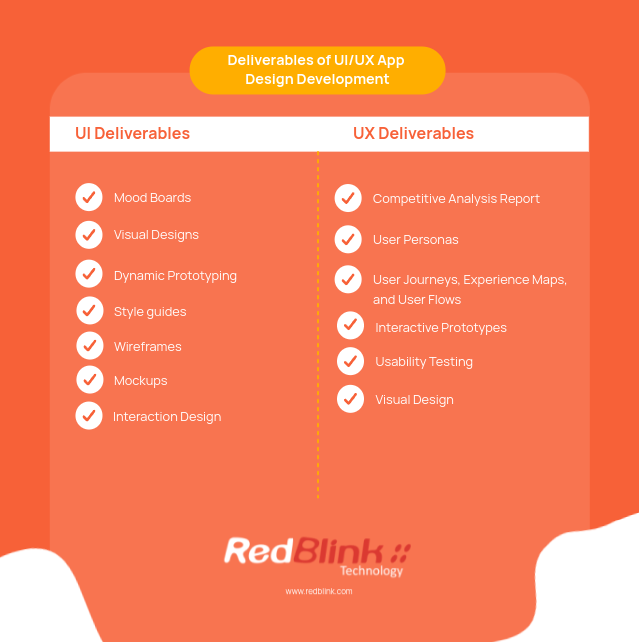
These deliverables serve various purposes, such as facilitating effective communication, documenting the project, and presenting ideas in a structured manner.
Both UI and UX have their distinct deliverables, which we will explore further to gain a better understanding of the role of mobile app UI/UX design in the overall mobile app design and development process.
UI Deliverables
- Mood Boards: Mood boards serve as a means to effectively communicate innovative ideas to a wide audience. They facilitate client understanding of the app concept that designers will be working on.
- Visual Designs: Visual designs play a vital role in comprehending the impact of various design elements. Elements such as photography, typography, space, colors, layouts, and images are better grasped through visual designs, allowing for a more comprehensive understanding of their effects.
- Dynamic Prototyping: Dynamic prototypes are another important UI deliverable. These prototypes contribute to enhancing the overall functionality of the app and enable ongoing improvements as necessary. With dynamic prototypes, the UI can be developed according to the specific desires and requirements of the clients.
- Style Guides: Style guides provide comprehensive guidelines for maintaining visual consistency throughout the app. They define the typography, color schemes, iconography, and other design elements that should be followed consistently across different screens and interactions.
- Wireframes: Wireframes are basic, low-fidelity representations of the app's layout and structure. They outline the placement of key elements and content without focusing on visual aesthetics. Wireframes help in planning the app's functionality and user flow.
- Mockups: Mockups are high-fidelity representations of the app's user interface. They incorporate visual design elements, such as colors, typography, and graphics, to showcase how the final app will look. Mockups provide a more realistic visual representation for client and stakeholder feedback.
- Interaction Design: Interaction design focuses on defining the behavior and responsiveness of the app's interface. It involves creating interactive prototypes or animations that demonstrate how users will engage with the app's features and navigate through different screens.
- Icon Design: Icons play a vital role in enhancing the visual appeal and usability of an app. Icon design involves creating a set of cohesive and intuitive icons that represent actions, features, or concepts within the app. These icons contribute to the overall user experience and aid in navigation.
- Responsive Design: In today's multi-device landscape, responsive design has become very important. It involves designing and optimizing the app's user interface to adapt seamlessly across various screen sizes and orientations, ensuring a consistent and optimal user experience across different devices.
- Accessibility Design: Considering accessibility is essential to ensure that the app is usable and inclusive for all users, including those with disabilities. Accessibility design involves incorporating features and design considerations that enable users with visual, auditory, or physical impairments to effectively use the app.
UX Deliverables
- Competitive Analysis Report: The purpose of the competitive analysis report is to evaluate the level of competition your app faces. If your app operates in a highly competitive market or is unprepared to outperform its competitors, all efforts might go in vain. Conducting a competitive analysis can identify the strengths and weaknesses of your competitors' apps.
- User Personas: Creating buyer personas not only helps in understanding customer behavior but also facilitates effective communication with clients. The UX process involves conducting user research to gain insights into behavioral patterns.
- User Journeys, Experience Maps, and User Flows: Experience maps provide a comprehensive view of users' overall behavior and interactions with a product. They showcase expectations, time spent, reactions, thoughts, and needs, among other factors. User journeys, or user flows, describe how users interact with a product at different stages. Depending on the product, these can include both current and potential interactions.
- Interactive Prototypes: This is another essential deliverable in the UX process. Utilizing rudimentary prototypes can save significant time and effort while still effectively fulfilling their purpose. Prototypes help demonstrate how the final product will function once fully developed, enabling designers to communicate their ideas more effectively.
- Usability Testing: It is a crucial UX deliverable that involves observing and analyzing how users interact with the app or website. By conducting usability tests, designers can gather valuable feedback on the usability and effectiveness of the user interface. This feedback helps identify areas for improvement and ensures a more user-friendly experience.
- Visual Design: This encompasses the aesthetic aspects of the app or website, including color schemes, typography, icons, and overall branding. It focuses on creating a visually appealing and cohesive interface that aligns with the target audience and brand identity. Visual design enhances the overall user experience and helps establish a strong visual identity for the product.
The Business Value of UI/UX Design in Android App Development
Creating an exceptional user experience is essential for businesses to thrive and succeed. Users demand seamless, intuitive, and visually appealing interfaces that not only meet their needs but also exceed their expectations.
Let's explore the significant business value of incorporating UI/UX design principles into your Android app development strategy.
-
Enhance User Satisfaction and Engagement
The success of any app hinges on its ability to satisfy and engage users. UI/UX design plays a crucial role in achieving this goal. By employing user-centered design principles, you can create an app interface that is intuitive, easy to navigate, and visually appealing. A seamless user experience not only delights users but also keeps them engaged, leading to increased usage, positive reviews, and higher customer satisfaction.
But why is user satisfaction so important? Satisfied users are more likely to become loyal customers, recommend your app to others, and even advocate for your brand. If your business mobile app lies in a highly competitive niche then user satisfaction can be the key differentiator that sets your app apart from the rest.
-
Differentiate from Competitors
Speaking of differentiation, UI/UX design is an excellent avenue for setting your Android app apart from competitors. By investing in a well-designed and user-friendly interface, you can create a unique brand identity and establish a competitive edge.
When users are faced with multiple app options offering similar features, they often turn to design as a deciding factor. A visually appealing and intuitive interface can make a lasting impression, making users more likely to choose your app over competitors. Stand out from the crowd by delivering an exceptional user experience through thoughtful UI/UX design.
-
Increase Conversion Rates and Revenue
When you own or manage a business you always seek good conversions and revenue. A well-designed app interface has the power to influence user behavior and drive conversions. By optimizing the user flow, simplifying the conversion process, and strategically placing calls to action, you can guide users towards desired actions, such as making purchases, signing up for services, or subscribing to premium features.
Moreover, a positive user experience instills trust and confidence in users, increasing their willingness to engage with your app and make transactions. With UI/UX design best practices, you can create an app that drives revenue and boosts profitability.
-
Reduce Development and Maintenance Costs
Contrary to popular belief, investing in UI/UX design can actually help you save costs in the long run. By incorporating user-centered design principles early in the development process, you can identify and address usability issues, design flaws, and user pain points before they become costly problems.
A well-designed app reduces the need for extensive post-launch fixes and updates, ultimately saving development and maintenance costs. Additionally, by providing a seamless user experience, you can minimize user support requests and inquiries, freeing up valuable resources to focus on enhancing your app's features and expanding your business.
-
Improve Customer Loyalty and Retention
Building customer loyalty is vital for sustained success in the app market. A loyal user base not only generates repeat business but also serves as a brand ambassador, driving organic growth through positive word-of-mouth.
A key driver of customer loyalty is a positive user experience. When users find an app that consistently meets their needs, provides value, and offers an enjoyable experience, they are more likely to remain loyal and continue using the app over time.
By prioritizing UI/UX design, you can foster strong relationships with your users, enhancing customer retention and maximizing the lifetime value of each customer.
Key Considerations for UI/UX Design in Android App Development
Looking to start an Android App development and aiming for a seamless and engaging user experience?
The success of your app greatly depends on how well you incorporate UI/UX design principles. With millions of apps available in the market, it's essential to stand out and deliver an exceptional user experience that keeps your users engaged and satisfied.
In this section, we will explore the key considerations for UI/UX design in Android app development.
-
User Research and Understanding
To design an Android app that resonates with your target audience, conducting thorough user research is vital. This involves utilizing various methods such as surveys, interviews, and analytics data analysis to gather insights into user behavior, preferences, and pain points.
Understanding your users on a profound level sets a solid foundation for creating a user-centric app that addresses their specific requirements and delivers a delightful experience.
-
Define User Personas and User Journeys
Once you have gathered user research data, the next step is to define user personas and map out user journeys.
-
- User personas are fictional representations of your target users, encapsulating their characteristics, goals, motivations, and pain points. These personas help you empathize with your users and design an app that caters to their unique needs.
- User journeys, on the other hand, illustrate the step-by-step interactions users have with your app, from initial discovery to completion of tasks.
- Mapping out user journeys allows you to identify pain points of your mobile app, areas of friction, and opportunities for improvement. This way you can create a seamless and intuitive user experience.
-
Wireframing and Prototyping
Wireframing and prototyping are essential steps in the Android app design process. Tools such as Sketch, Figma, or Adobe XD can be used for wireframing.
These tools allow designers to create low-fidelity visual representations of the app's layout, focusing on the structure and placement of key elements and features.
Prototyping tools like InVision, Marvel, or Proto.io enable designers to add interactivity, simulating the app's functionality and user flows for testing and feedback.
Creating prototypes can help in identifying usability issues early on and making necessary adjustments, saving time and resources in the development phase.
-
Visual Design and Branding
The visual design and branding of your Android app significantly impact user perception and engagement.
Using tools like Adobe Photoshop or Illustrator, designers can create visually appealing interfaces that align with your brand identity.
Adhering to the Material Design guidelines provided by Google ensures a consistent and intuitive experience across different Android devices.
-
Usability Testing and Iterative Improvement
Usability testing plays a crucial role in refining your Android app's user experience.
Tools like UserTesting, Optimal Workshop, or Maze enable you to observe real users interacting with your app and gather feedback.
Through iterative improvement, you can make incremental changes based on user feedback, ensuring your app continuously evolves and meets user expectations.
Usability testing and iterative improvement can create an Android app that is user-friendly, intuitive, and capable of delighting your target audience.
FAQs About the Importance of UI/UX Design
-
Why is UI/UX design important for business success?
UI/UX design directly impacts user satisfaction and engagement with an app. A well-designed app that provides a positive user experience can significantly contribute to customer loyalty, higher usage rates, and positive reviews. It differentiates a business from its competitors and can lead to increased customer acquisition and retention.
-
What tools can be used for UI/UX design in Android app development?
There are several tools available for UI/UX design in Android app development. Some popular options include Sketch, Figma, Adobe XD for wireframing and prototyping, and Adobe Photoshop or Illustrator for visual design. Additionally, tools like InVision, Marvel, or Proto.io can be used for creating interactive prototypes to test and gather feedback from users.
-
Can UI/UX design impact app monetization and business revenue?
Yes, UI/UX design can have a significant impact on app monetization and business revenue. A well-designed app that delivers a positive user experience is more likely to attract paying customers, encourage in-app purchases, and generate higher revenue through increased usage and user engagement.
-
Is UI/UX design a one-time process or an ongoing effort?
UI/UX design is an ongoing effort that should be integrated throughout the entire app development lifecycle. It starts with user research and continues through the wireframing, prototyping, visual design, and usability testing stages. Additionally, continuous monitoring of user feedback and iterative improvements are necessary to adapt the app to evolving user needs and ensure its long-term success.
Looking to Hire UI/UX Designers for Android App Development?
To ensure effective UI/UX design in Android app development, businesses should consider hiring skilled UI/UX designers who possess expertise in creating visually appealing and user-friendly interfaces. RedBlink UI/UX designers, known for their proficiency and experience, can be an excellent choice for businesses seeking top-notch design solutions.
With RedBlink UI/UX designers along with Android app developers, you can expect innovative and immersive design solutions that align with your business goals and user expectations. Their expertise in user research, wireframing, prototyping, visual design, and usability testing can help you deliver exceptional user experiences and achieve your desired app performance. Check out our portfolio section to get an overview of their skill and expertise.
Don't underestimate the impact of UI/UX design on your Android app's success. Take the leap and hire RedBlink UI/UX designers to unlock the full potential of your app and elevate your business to new heights. Invest in UI/UX design today and reap the rewards of a well-designed and user-centric Android app. Schedule an appointment today!
AI in Cyber Security - Use Cases, Risks & Challenges in 2024
AI in Cyber Security
Have you ever wondered how companies protect their valuable data from cyber-attacks?
With the increasing complexity of cyber threats, traditional security measures may no longer be enough. It has become more important than ever to secure our data and digital assets.
And, the perfect due to combat cyber threats - Artificial Intelligence (AI) in Cyber Security.
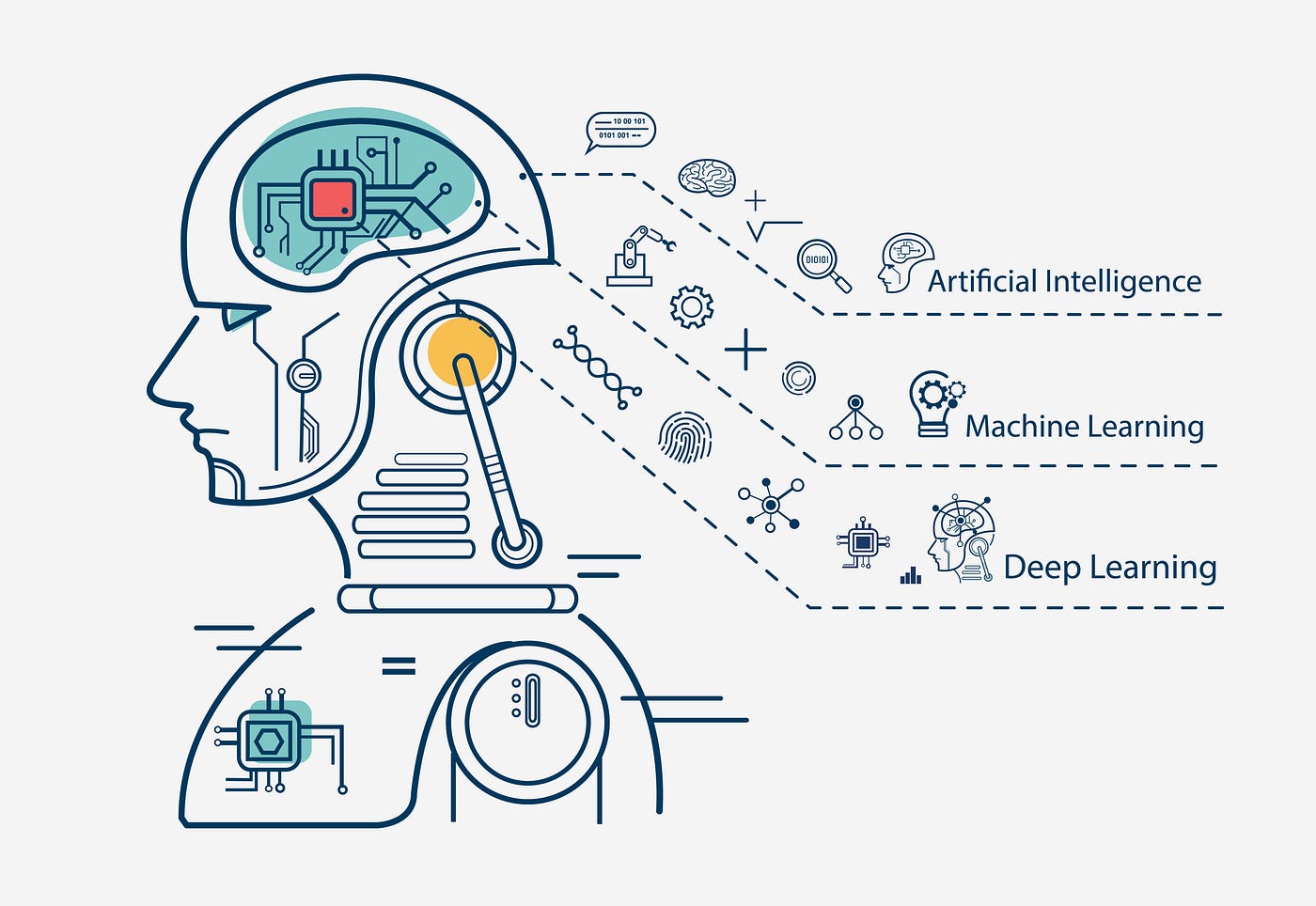
Artificial Intelligence (AI) is revolutionizing the field of cybersecurity by augmenting traditional defense mechanisms with advanced algorithms and automation. AI, Machine Learning, and Deep Learning play a pivotal role in automating critical cybersecurity processes. By leveraging these technologies, organizations can streamline tasks such as threat detection, incident response, and vulnerability assessment.
Generative AI models have shown great potential in various industries, including healthcare, finance, manufacturing, and more. With their ability to generate synthetic data and simulate scenarios, these models can aid in medical research, financial risk analysis, and product design.
In this article, we will explore the advantages of AI in cyber security and how it is transforming the way we secure our data.
So, fasten your seatbelt, and let's dive into the world of AI in cyber security!
Facts
The latest report by Verified Market Research suggests that the market size for Artificial Intelligence in cybersecurity stood at 7.58 billion dollars in 2022 and is expected to reach 80.83 billion by 2030. The growing number of cyber-attacks shouldn't come as a surprise since hackers also have access to advanced technologies.
In line with this, a report from Pillsbury, a global law firm specializing in technology, revealed that 44% of organizations worldwide already utilize AI for detecting security breaches.
Role of Generative AI in Cyber Security
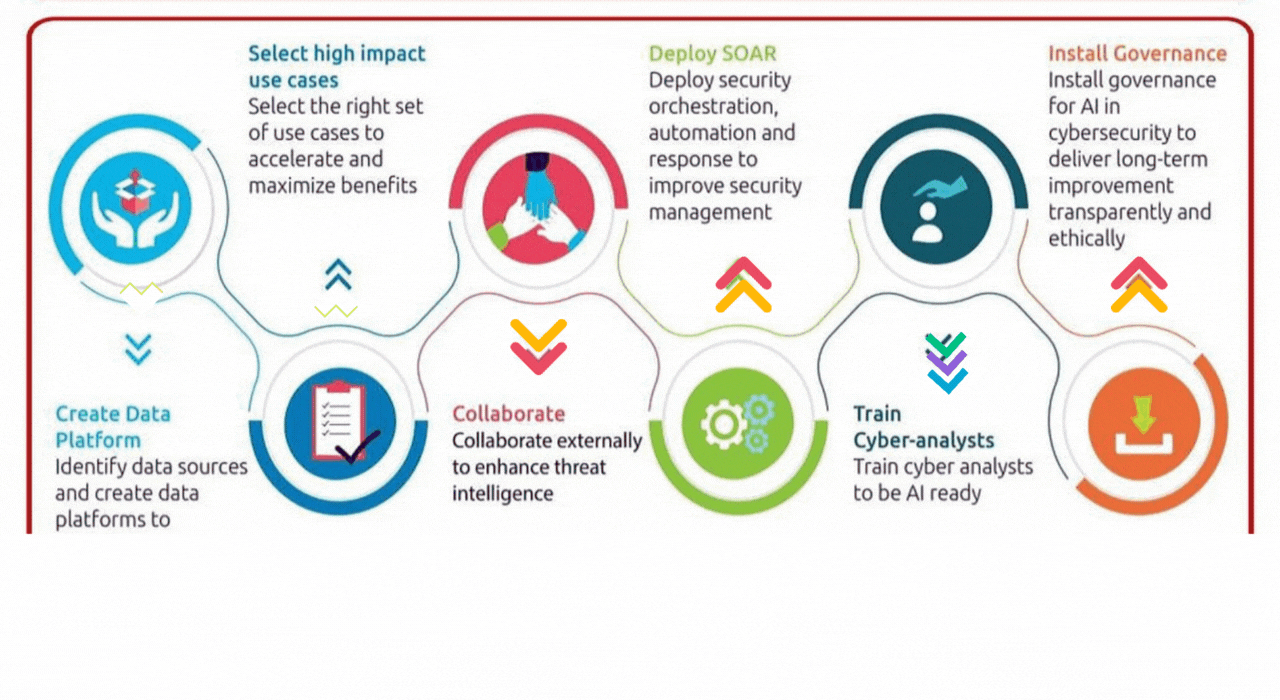
The role of generative AI in Cyber Security is becoming increasingly important in today's digital age. AI analyzes vast amounts of data in real time, identify potential threats, and predicts future attacks. It improves the technologies that companies use to combat cybercriminals and helps organizations keep customer data safe.
AI can also automate routine security tasks, freeing up human experts to focus on more complex and strategic security issues. AI in Cyber Security is applicable in various areas, including threat detection, fraud prevention, identity and access management, and incident response.
In cyber security, artificial intelligence proves to be beneficial as it improves the way security experts analyze, study, and understand cybercrime.
AI in cybersecurity: Risks & Challenges
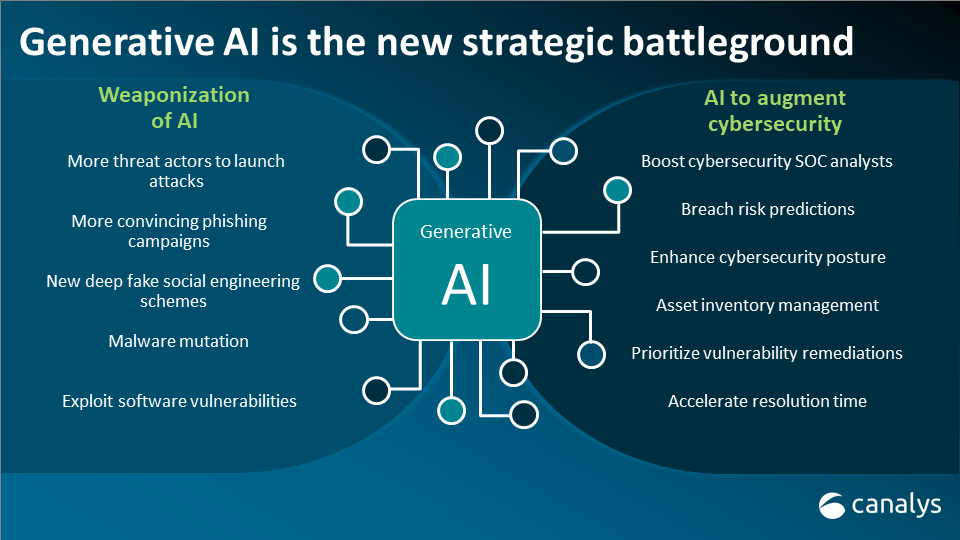
Source - canalys.com
Machine learning has brought tremendous benefits to businesses, helping them make informed decisions, automate tasks, and gain valuable insights. However, integrating AI into cybersecurity systems presents its own set of challenges and risks.
Gaurav Keerthi, Deputy Chief Executive Officer at the Cyber Security Agency of Singapore, highlights the dual nature of AI in cybersecurity, stating that while it holds promise, it can also pose threats.
Let's take a look at some of the challenges associated with integrating AI into cybersecurity:
- Data Manipulation: AI systems rely on data to learn and identify patterns. Hackers can gain access to this training data and manipulate it by introducing biases or altering it to their advantage. Such actions can compromise the accuracy and effectiveness of AI models, potentially leading to security breaches.
- AI-Powered Cyber Attacks: Hackers can utilize AI techniques to develop intelligent malware that can adapt and modify itself to evade detection by even the most advanced cybersecurity software. This makes it increasingly difficult for traditional security measures to keep up with evolving threats.
- Data Availability: The performance of AI models heavily relies on the quantity and quality of data available for training. If the training data is insufficient or contains biases, the AI system may not perform as expected. Inadequately trained models can result in false positives, providing a false sense of security and leaving organizations vulnerable to undetected threats.
- Privacy Concerns: AI models often require access to real-world user data to accurately understand user patterns. Without appropriate measures like data masking or encryption, this sensitive data becomes vulnerable to privacy breaches, potentially exposing users to security risks and malicious exploitation.
- Attacks on AI Systems: AI systems themselves are not immune to cyber-attacks. Hackers can intentionally feed poisoned or manipulated data to these models, altering their behavior to serve their malicious objectives. This underscores the importance of protecting AI systems from malicious manipulation.
Despite these challenges, it is crucial to approach AI integration in cybersecurity with a balanced perspective. Building robust infrastructures and implementing measures to mitigate these risks can create a safer environment for digital systems to operate securely.
To further understand the risks and challenges associated with AI in cybersecurity, you can explore the implications of generative AI models in this insightful blog post - Types of Generative AI Models
Generative AI Use Cases in Cyber Security
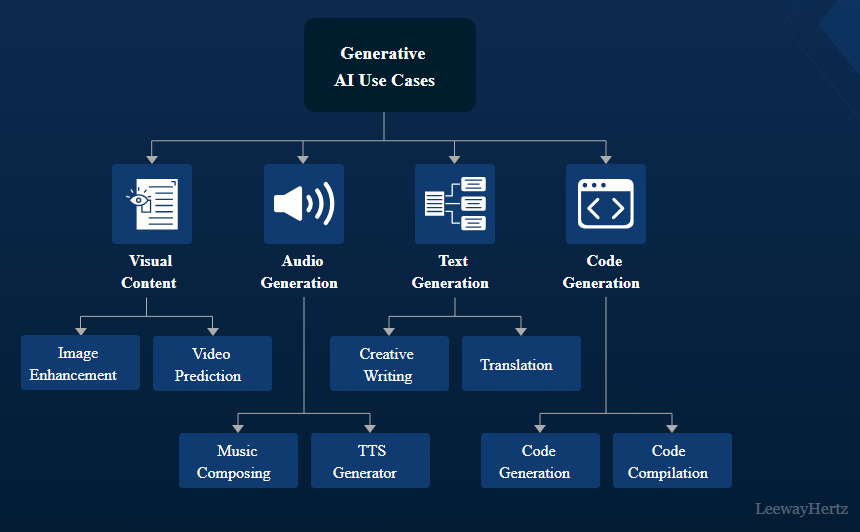
Source - leewayhertz.com
As technology advances, the risk of cyber threats and attacks grows higher.
To combat these risks, companies are turning to Artificial Intelligence (AI) to enhance their cybersecurity measures. They are eager to know, how is AI used in cyber security. This innovative approach utilizes ML algorithms to detect potential threats and prevent attacks.
Here is the list of use cases of generative AI in Cyber Security:
1. AI-Enabled Threat Detection and Response
AI has the power to analyze massive amounts of data and identify patterns and anomalies that may indicate a cyber attack.
This allows security personnel to respond to threats quickly and mitigate their impact. Meanwhile, AI is trained to recognize new and emerging threats, helping organizations stay one step ahead of cybercriminals.
It allows organizations to significantly enhance their cybersecurity defenses and better protect their data and digital assets.
2. AI's Role in Ransomware Attacks Mitigation
When someone intentionally holds your files or system hostage and demands money in return for giving you your website's access back, it's called a ransomware attack. By scanning your website with the Malware scanner, you can detect common bugs and check your website's security.
AI-based cybersecurity systems are designed to be better at finding malicious traits. According to Chuck Everette, who works in cybersecurity at Deep Instinct, traditional antivirus systems can stop around 30% to 60% of threats, while AI-powered systems have a success rate of 80% to 92%.
Researchers at Plymouth University worked on a technique called computer vision. They transformed files into colorful images that clearly show the difference between malicious and harmless files.
Using neural networks, the researchers achieved an overall accuracy of 74% in detecting malware across all file formats.
They were even able to reach 91.7% and 94.1% accuracy in detecting malware in .doc and .pdf files, respectively.
Also, read How Generative AI is Helping in Reducing the Risk of Errors
3. Fraud Detection with AI in Cyber Security
With the rise of digital transactions and financial data, companies need advanced technology to detect potential fraud or financial crimes. AI can analyze massive amounts of financial data to identify patterns and anomalies that may indicate fraudulent activity. It can also monitor financial transactions in real-time, alerting security personnel to suspicious activity. Hence, AI can protect companies’ financial assets and ensure that their customer's data is secure.
4. Enhancing Network Security with AI
AI can analyze vast amounts of network traffic data and identify potential vulnerabilities. This technology monitors network activity to detect and respond to threats as they arise, preventing damage before it occurs. With AI in network security, organizations can have a more proactive approach to cybersecurity and prevent threats from penetrating their networks.
This means AI has revolutionized the way network security is managed and has become an essential part of any organization's cybersecurity strategy.
5. AI-Powered User Authentication and Access Control
Unauthorized access to sensitive data and systems can lead to significant security breaches and data leaks. This technology plays a vital role in ensuring that only authorized users have access to sensitive data and systems. AI analyzes user behavior and access patterns to identify potential security risks and prevent unauthorized access.
It can also help detect unusual user behavior, such as unusual login attempts or unusual access patterns, which could indicate a security breach. With AI-based user authentication and access control, organizations can enhance the security of their data and systems and prevent cyber threats.
6. Countering Phishing Attacks with AI in Cyber Security
Hackers have a common method called phishing, where they send harmful links to people through emails. The goal is to trick them into giving away sensitive information or disrupting their computer systems. When someone clicks on these harmful links, it activates malware (malicious software).
Luckily, artificial intelligence (AI) can help detect phishing attacks. Researchers at the University of North Dakota came up with a technique that uses AI to analyze the structure of emails and determine if they are legitimate or phishing emails. They trained their system with 4000 samples and achieved an impressive accuracy of 94%.
One example of an effective AI-based tool for detecting phishing is Mimecasts's CyberGraph. It identifies the patterns and blocks harmful elements in emails that could reveal sensitive information. The tool also looks for patterns and uses identity graphs to spot phishing attempts. If a threat is detected, it alerts users with color-coded warning banners.
Cofense is another well-known company in the cybersecurity field. They acquired Cyberfish, a provider of AI systems for phishing protection. By combining their expertise in machine learning, computer vision, and detection and response, they have developed a real-time protection system against phishing attacks.
In addition to detecting phishing, AI can also analyze malware based on its characteristics. For example, if software is designed to delete or encrypt files without permission, it is likely to be a threat. AI can quickly identify such malicious software and help protect against it.
Also, read our in-depth blog post on Generative AI vs Machine Learning vs Deep Learning
7. AI for Detecting and Prioritizing New Threats
As software architectures become more complex, the number of potential vulnerabilities also increases. In fact, in 2022 alone, there were over 22,000 newly registered vulnerabilities, marking the highest recorded number since 2009, according to Statista.
Keeping up with all these digital threats is a daunting task for cybersecurity professionals. However, thanks to machine learning, AI-powered cybersecurity systems can stay on top of global and industry-specific vulnerabilities.
These systems continuously update their AI models with the latest data on threats and vulnerabilities, enabling them to defend against new threat actors and proactively prevent future attacks. The success of AI in the cybersecurity field has caught the attention of major tech companies like Google, IBM, and Microsoft.
For instance, Google has committed to investing $10 billion over the next five years to advance cybersecurity through various initiatives. One of their notable projects is Project Zero, a team dedicated to finding and fixing web vulnerabilities to make the internet a safer place. Additionally, Google Play Protect scans over 100 billion apps regularly to detect and protect against malware and other cyber threats.
Microsoft's Cyber Signals program leverages AI to analyze a staggering amount of data, including 24 trillion security signals, 40 nation-state groups, and 140 hacker groups. This program is designed to detect malicious activities and identify software-related weaknesses.
According to Microsoft's report, the Cyber Signals program successfully blocked over 35.7 billion phishing attacks and prevented 25.6 billion identity theft attempts on enterprise accounts.
8. Leveraging AI for Malware Detection and Prevention
Malware can take many forms and can be difficult to detect with traditional security measures. However, AI can analyze large amounts of data to identify malware patterns and anomalous behavior that may indicate a malware attack.
It can also learn and adapt to new types of malware, improving the accuracy of detection and prevention. This way organizations can enhance their overall cybersecurity posture and reduce the risk of damaging malware attacks.
9. Predicting Breach Risk with AI in Cyber Security
Large enterprises possess a vast inventory of IT assets, but evaluating each component for potential security breaches can be a daunting task. However, with the help of artificial intelligence (AI) tools, this complex process becomes more manageable.
AI tools are capable of identifying the components within the inventory that are most vulnerable to breaches and can even predict the types of attacks that are likely to occur.
To enhance security measures, researchers have introduced cognitive learning-based models that monitor access points for authorized logins. These models continuously analyze login activities and can swiftly detect any signs of remote hacking attempts. Once a potential breach is identified, users are promptly alerted, and additional security layers can be implemented to prevent any potential data breaches.
When organizations receive early information about hacking incidents and breaches, they can gain valuable insights that enable them to allocate their resources and tools more effectively. This proactive approach allows them to better prepare for future attacks and develop robust cyber resilience.
10. Behavioral Analysis and Anomaly Detection Using AI in Cyber Security
AI analyzes user behavior and network traffic to identify patterns and anomalies that may indicate a cyber attack. It can also detect and respond to unusual behavior in real-time, preventing potential attacks before they can cause damage.
With the help of machine learning, AI can learn and adapt to evolving threats, making it an invaluable tool for detecting and responding to cyber-attacks. AI can help organizations quickly detect and respond to potential security breaches by detecting unusual patterns and anomalies, minimizing the impact of cyber attacks.
To learn more about the role of machine learning in enhancing cybersecurity, you can explore the comprehensive machine learning services offered by RedBlink.
11. AI-Based Vulnerability Assessment and Management
AI applications in cybersecurity encompass a wide range of capabilities. AI can analyze systems and applications to identify potential vulnerabilities, such as outdated software or weak passwords. This automates the vulnerability assessment process and significantly reduces the time and resources needed to maintain security.
AI can also assist in prioritizing vulnerabilities based on their potential impact, allowing security personnel to focus on the most critical threats first. The top impact of AI on cyber security is that with AI-powered vulnerability management tools, organizations can proactively address security risks and minimize the chances of a successful cyber attack.
Also, check out our blog post on Generative AI Applications Use Cases
12. Automation of Cyber Security Tasks using AI
In the world of cybersecurity, time is of the essence. The longer it takes to detect and respond to cyber threats, the more damage they can cause. When relying on manual processes for threat detection and mitigation, attackers have ample opportunity to carry out their malicious activities, such as encrypting or stealing data, covering their tracks, and creating hidden access points within your system.
However, with the power of artificial intelligence (AI), we can automate the process of threat detection and response, significantly reducing the time it takes to safeguard against cyber threats. According to IBM, by employing AI methodologies, the time required to detect and take action against these threats can be reduced by an impressive 14 weeks.
Hence, implementing an AI-enabled automated threat detection solution can effectively process billions of network requests, endpoints, user activities, and data points daily. These vast amounts of data are analyzed in real-time, providing instant insights and allowing for immediate action to be taken within minutes, as opposed to the hours or even days it may take through manual threat detection methods.
Generative AI: Cyber Security Use Cases
There are tremendous benefits of AI in cyber security. Explore how Generative AI enhances security with the help of neural networks. It provides real time information about threats and solutions. Here we have explained to you the use cases of generative AI in cyber security -
- Threat Detection and Response
- Ransomware Attacks
- Fraud Detection
- Network Security
- User Authentication and Access Control
- Phishing Attacks
- Detect & Prioritize New Threats
- Malware Detection and Prevention
- Breach Risk Prediction
- Behavioral Analysis and Anomaly Detection
- Vulnerability Assessment and Management
- Task Automation
Future of Generative AI in Cyber Security
Securing an organization's network is paramount in today's technological age, and vulnerability management is the key to achieving it. Daily, companies face a deluge of threats that they must first detect, classify and then mitigate to prevent any potential damage. To manage all these vulnerabilities, one must analyze and assess the security measures available through AI research, which proves to be of great assistance.
The future holds even greater promise for securing an organization's or system's safety. Artificial neural networks can learn patterns over time and aid in identifying potential threats that share similar characteristics. This early detection is critical in blocking such threats, and AI technology applied to cybersecurity makes it all the more difficult for hackers to infiltrate.
As AI continues to learn and improve from various situations, it makes it increasingly challenging for hackers to outsmart the system.
Conclusion
With the growth of companies and the increased activity of their networks, generative AI in cyber security becomes a critical aspect of protecting data from malicious attacks.
With vast amounts of data transferred daily between customers and organizational servers, it becomes a daunting task for cyber security personnel to monitor and detect potential threats. This is where the innovative solution of Artificial Intelligence (AI) comes into play.
Generative AI has emerged as a vital tool for enhancing the performance of IT security groups. With the help of RedBlink’s AI Consulting Services, and Generative AI development services you can easily identify threats and secure your business websites from cyber crimes. Hire ChatGPT developers, Machine Learning engineers on hourly or monthly basis.
Clearly, AI enables the discovery and targeting of potential risks, accelerates incident response, and identifies malware attacks before they occur. To learn more about how AI can revolutionize cyber security, take the initiative to explore this rapidly evolving field with our help of us.
Setting up Scroll Depth Event by Using GTM - [2024 Guide]
Scroll Depth Event Set up Using GTM
As you already might know, Universal Analytics will no longer be supported w.e.f July 1, 2023. Google has been making this update since last year and so to shift its users from Universal Analytics to GA 4. And now it is near approaching, so we are helping our readers to make it more convenient.

Google Analytics 4 is the next-generation measurement solution that offers advanced capabilities and insights to enhance your online presence. It is much far better than Universal Analytics because of its latest advancement. It has many features that can provide in-depth insights into your user engagement.
In this tech guide, we will explore one of the exciting features of GA4 - Scroll Tracking and its tremendous potential for your website.
You will be amazed to know that the inbuilt GA4 scroll depth feature tracks only 90% of scroll events. However, there are several other scroll depths, such as 10%, 20%, 50%, and 75% and if you have a heavy website with lots of content, then these scroll depth events play an essential role in measuring the behavior of your website visitor.
By leveraging the power of GA4 through Google Tag Manager (GTM), you will gain an unparalleled understanding of user behavior, all while supercharging your Pay-Per-Click (PPC) campaigns.
What is Scroll Depth & Its Types?

[image source: giphy.com]
Scroll depth is like diving into an ocean of information. It is an important metric that provides website owners with valuable insights into user engagement. It measures how far users scroll on a webpage, highlighting areas where they may lose interest or drop off.
As businesses strive to create engaging content and optimize user experience, understanding scroll depth becomes increasingly important. All-in-all, we can say that it's an exciting journey of uncovering hidden gems and absorbing valuable insights.
Types of Scrolling Depth
As we all know that scrolling can be done in two directions, either vertical or horizontal. So, scroll depth can be categorized into two types:
- Vertical Scrolling Depth
- Horizontal Scrolling Depth
1. Vertical Scroll Depth:
This type measures how much users scroll vertically on a webpage. It indicates the percentage of the page that users have viewed or reached during their scrolling journey.
For example, if a user scrolls halfway down a page, the vertical scroll depth would be 50%.
2. Horizontal Scroll Depth:
Unlike vertical scroll depth, this type focuses on measuring horizontal scrolling. It is particularly relevant for web pages with wide layouts or those that require users to scroll horizontally to access additional content.
Horizontal scroll depth indicates how much of the horizontal space users have explored.
What is Scroll Depth Trigger In Google Tag Manager?
The Scroll Depth Event is a JavaScript event that fires when the user scrolls a webpage. It provides information about the distance the user has scrolled, including the number of pixels the user has scrolled, the number of times the user has scrolled, and the direction of the scroll.
This event is widely used by website owners to optimize the user experience and identify areas of the page that need improvement.
Top Benefits of Tracking Scroll Depth
Tracking Scroll Depth can provide numerous benefits for website owners, including:
-
Better understanding of user behavior:
Tracking scroll depth provides valuable insights into user behavior, such as which elements are most effective at keeping users engaged and which content or design elements are driving them away.
-
Improved content creation:
Scroll depth tracking can help businesses create more engaging and relevant content that resonates with their target audience. By analyzing which types of content perform best at different points on the page, they can tailor their content marketing strategy for optimal results.
-
Enhanced user experience:
Understanding how users interact with a web page through Scroll Depth tracking allows website owners to create a better user experience overall. They can optimize the flow of information on the page, improve navigation elements and make other adjustments that lead to higher engagement rates.
-
Increased conversion rates:
By improving engagement rates and creating a better user experience overall, businesses may be able to boost conversion rates as well. Tracking Scroll Depth provides valuable data that helps inform optimization efforts aimed at driving conversions. Website Owners can use this data to better optimize their first fold of the website.
-
Gaining valuable analytics data:
By tracking scroll depth, website owners can generate detailed analytics data that can be used to inform decision-making and improve the overall performance of their websites.
Configuring GA4 Event Tracking with Google Tag Manager
Before diving into technicalities, let's pen down important points about event tracking with Google Tag Manager.
- GA4 offers built-in event tracking for scroll activity, outbound clicks, file downloads, and video views within its interface through Enhanced Measurement.
- Keep in mind that these built-in events have some limitations compared to advanced tracking options in GTM.
- For a more comprehensive analysis, you can use GTM to fire events with specific parameters for different scroll thresholds (e.g., 25%, 50%, 75%, 100%) on the page.
- GTM provides flexibility to fire events for various user actions on the site beyond the built-in events.
- As an example, we'll demonstrate event setup for scroll tracking, but you can utilize the GA4 Event tag in GTM to create events for any available triggers.
Setting Up Scroll Depth in Google Analytics 4 with Google Tag Manager (Step By Step Process)
- Step 1: Create a new tag with the Tag Type "Google Analytics: GA4 Event".
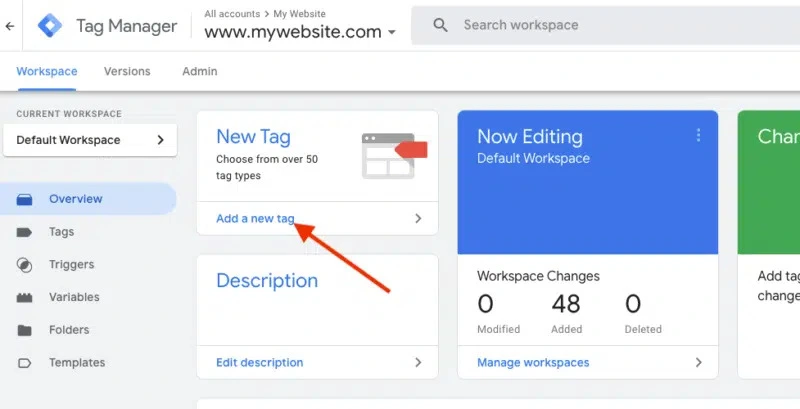
- Step 2: Select your GA4 ID in the Configuration Tag.
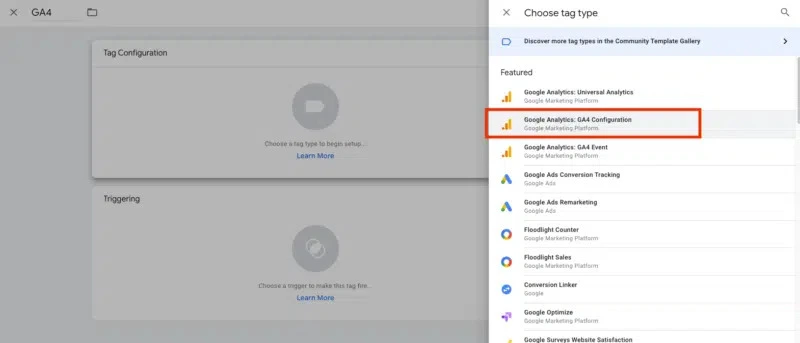
- Step 3: Specify the Event Name, such as "scroll" to align with the existing event in GA4.
Use "scroll_depth" as the Parameter Name and assign the value "{{Scroll Depth Threshold}}" to capture scroll percentages using the GTM variable.
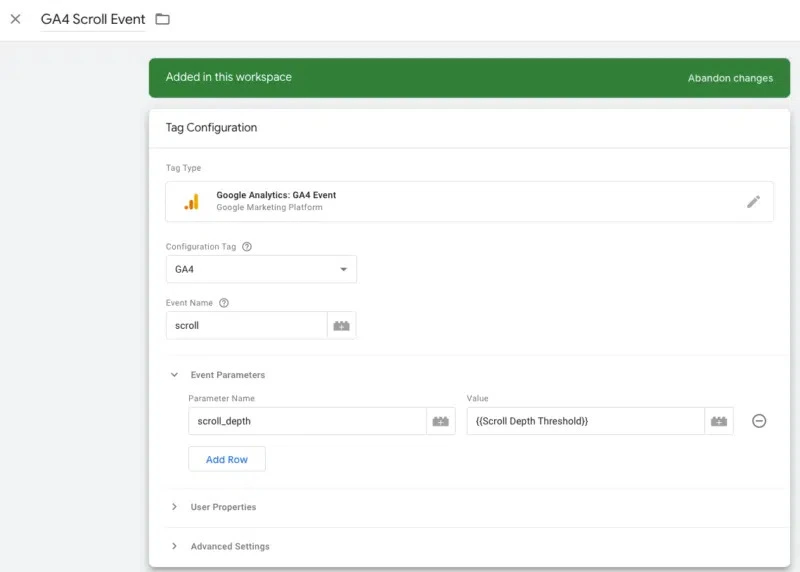
- Step 4: Create a new trigger by selecting the "Scroll Depth Trigger" in the Triggers section -> Choose the scroll direction (vertical or horizontal) and specify whether to track percentages or pixel depth -> Enter the scroll points you want to track and separate by commas.
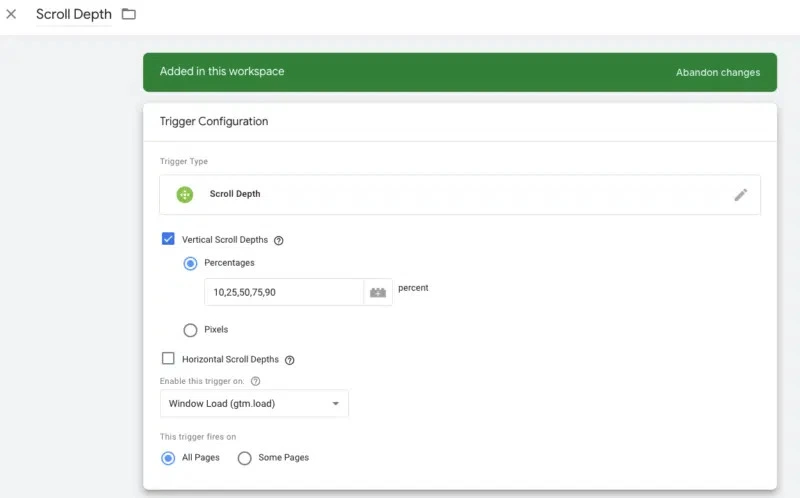
- Step 5: Save the trigger, save your tag, and publish it to make it live.
By following these steps, you will start seeing more detailed scroll data in the Events section of Google Analytics.
You can use this same approach to fire additional events into Google Analytics. Customize the event names, and add parameters for additional details and variable data points, either using default GA4 events or creating custom ones.
Quick Recap of Scroll Depth Tracking:
Remember, by not implementing scroll tracking, as an entrepreneur you may struggle to understand how users interact with web pages. You could be left in the dark about which parts of the content are resonating with the audience and which areas need improvement. Without this crucial data, optimizing the user experience becomes a challenging task.
Furthermore, the absence of scroll tracking limits the ability to tailor digital marketing strategies effectively. It becomes difficult to fine-tune campaigns, identify areas of low engagement, and make data-driven decisions to enhance overall performance.
But, with the power of GA4 and GTM, you can gain valuable insights into user behavior, optimize your website, and supercharge your PPC campaigns. By following the step-by-step procedures outlined in this guide, you have equipped yourself with the tools to unlock the potential of scroll tracking and event tracking in GA4.
At RedBlink, we're revolutionizing user tracking with cutting-edge techniques that uncover every digital footprint, empowering businesses to skyrocket their productivity. Don't miss out on the future of analytics—connect with us now and unlock the full potential of advanced user tracking for your enterprise.
Generative AI in Banking & Finance Industry [ Tools List 2024 ]
Generative AI in Banking
Are you curious about how artificial intelligence is transforming the banking sector? Have you ever wondered how banks manage to handle an overwhelming amount of data on a daily basis? How machines could process the tedious and time-consuming tasks in banking, freeing up human resources to handle more complex matters?
These possibilities and more are within reach with the advent of generative AI in the banking sector. From retail banking to investment banking, the potential applications of generative AI are vast and promising. With its ability to create synthetic data and interpret non-numeric data, generative AI can streamline operations and enhance customer experience.
Join us on a journey to explore the top areas where generative AI can bring significant changes and unlock new opportunities in the banking sector. Let’s get started.
Key takeaways :
- Generative AI possesses the ability to process extensive historical data and use it to make intelligent decisions.
- The banking sector stands to benefit significantly from the implementation of Generative AI, particularly in areas such as fraud detection, risk management, and real-time decision making.
- Chatbots and Virtual Assistants powered by Generative AI are expected to play a vital role in the future of banking, providing enhanced customer support and personalized services.
What Are the Different Areas Where AI Has a Great Impact?
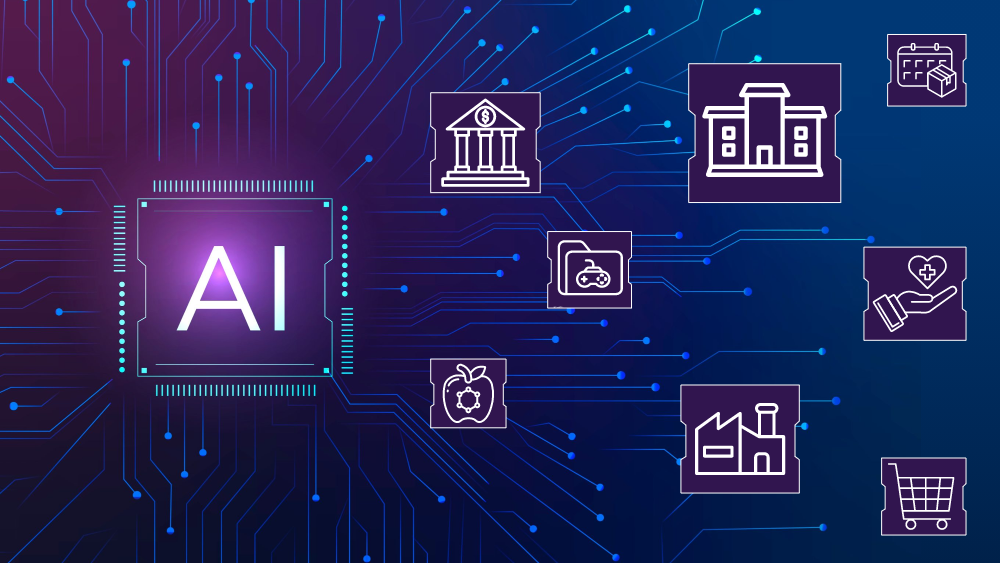
Generative AI revolutionizes the multiple domains within the banking industry. The top four areas where this technology could have the most significant impact are here. Let's take a look.
- Retail Banking And Wealth Management: Large financial institutions handle an immense number of account openings each day, necessitating effective know-your-customer (KYC) processes that are efficient and reliable. With the help of generative AI, synthetic data can be created to train machine learning algorithms that power KYC. This technology can also be utilized to develop more precise natural language models for virtual assistants.
- Small And Medium Business (SMB) Banking: Generative AI can facilitate the interpretation of non-numeric data such as business plans, thereby augmenting the sophistication of virtual assistants. Additionally, generative AI can help analyze small business loan applications in a more accurate and efficient manner.
- Commercial Banking: The operations of commercial banking can benefit from generative AI, enabling faster completion of back-office tasks. By answering questions in real-time about a customer's financial performance, even in complex scenarios, the technology can speed up operations. Furthermore, generative AI can supplement forecasting algorithms by supplying synthetic data in situations where limited data is available on business performance during specific economic conditions.
- Investment Banking and Capital Markets: It represents a domain where generative AI can contribute to the stress-testing of complex balance sheets containing illiquid financial products. By synthesizing test data from various scenarios, generative AI can improve the accuracy of financial stability measures and decrease compliance costs.
Hence, generative AI has the potential to revolutionize banking in a multitude of areas. Leveraging this technology can create more efficient and effective processes that will ultimately benefit their customers.
Also Checkout this post on Types of Generative AI Models
Use Cases of Generative AI in the Banking Sector

The banking sector has been quick to adopt generative AI technology, which offers a range of applications that can greatly benefit the banking industry. Here are the six most promising areas of application for generative AI in banking:
- Customer Service and Personalization - Generative AI can help banks provide more personalized customer service by analyzing data on customer behavior and preferences and generating recommendations for products and services that meet their needs.
- Risk Management and Credit Scoring - Generative AI can be used to analyze vast amounts of data to detect patterns that can help banks better manage risk and make more accurate credit-scoring decisions.
- Operation and Efficiency - Generative AI can help banks automate routine tasks and improve operational efficiency, allowing them to focus on more complex tasks that require human input and decision-making.
- Fraud Detection and Prevention - Generative AI can be used to identify patterns in customer behavior that may indicate fraudulent activity, allowing banks to take proactive measures to prevent fraud before it occurs.
- Investment Analysis and Portfolio Management - Generative AI can help banks analyze vast amounts of data on market trends and economic indicators, allowing them to make more informed investment decisions and manage portfolios more effectively.
- Chatbots and Virtual Assistants - Generative AI can be used to develop chatbots and virtual assistants that can provide customers with instant answers to their questions and help them navigate the banking system more easily.
Leveraging generative AI technology for banks can greatly improve their operations and provide better service to their customers, while also reducing the risk of fraud and making more informed investment decisions. The potential benefits of generative AI in banking are immense, and we are only beginning to scratch the surface of what this technology can offer.
Also read - Top 10 Generative AI Applications Use Cases & Examples
10 Generative AI Tools in Banking Sector
The banking sector has embraced Generative AI technology, and several powerful tools have emerged that offer innovative solutions for various banking functions.
These 10 Generative AI tools have been specifically designed to cater to the banking sector's needs, including automating customer service, generating synthetic data for KYC processes, and stress-testing complex financial products.
With these tools, banks can improve their efficiency, accuracy, and customer satisfaction while reducing operational costs.
1. DataRobot
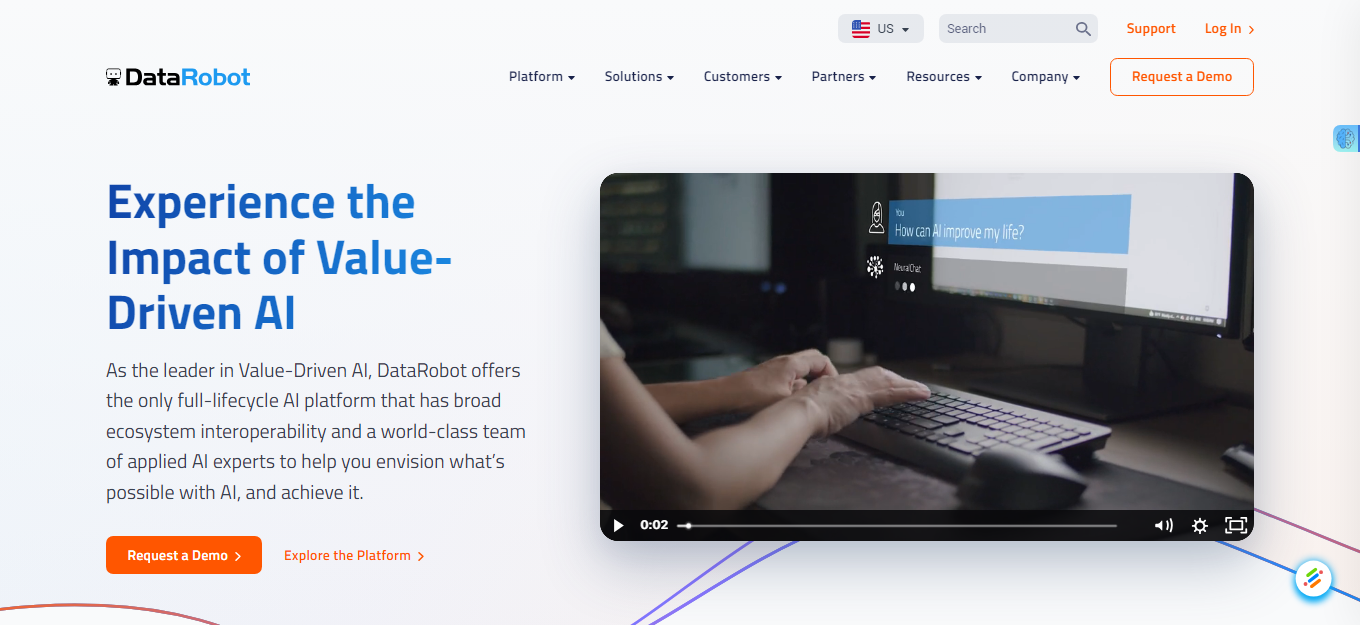
DataRobot is an AI and machine learning platform that has gained significant traction in the banking sector. Its applications are diverse, ranging from credit risk modeling and fraud detection to customer analytics and personalization. One of the key benefits of DataRobot is that it democratizes access to AI and machine learning by providing a user-friendly interface that can be easily integrated into existing banking systems.
The platform enables banks to develop more accurate predictive models and make data-driven decisions with greater efficiency. By leveraging DataRobot, banks can improve their risk management practices, enhance customer experiences, and increase their bottom line.
Features -
- Democratizes access to AI
- User-friendly interface
- Easily integrates into existing systems
- Develops accurate predictive models
- Improves risk management practices
- Enhances customer experiences
- Increases efficiency and productivity
- Drives data-driven decision-making
2. H2O.ai
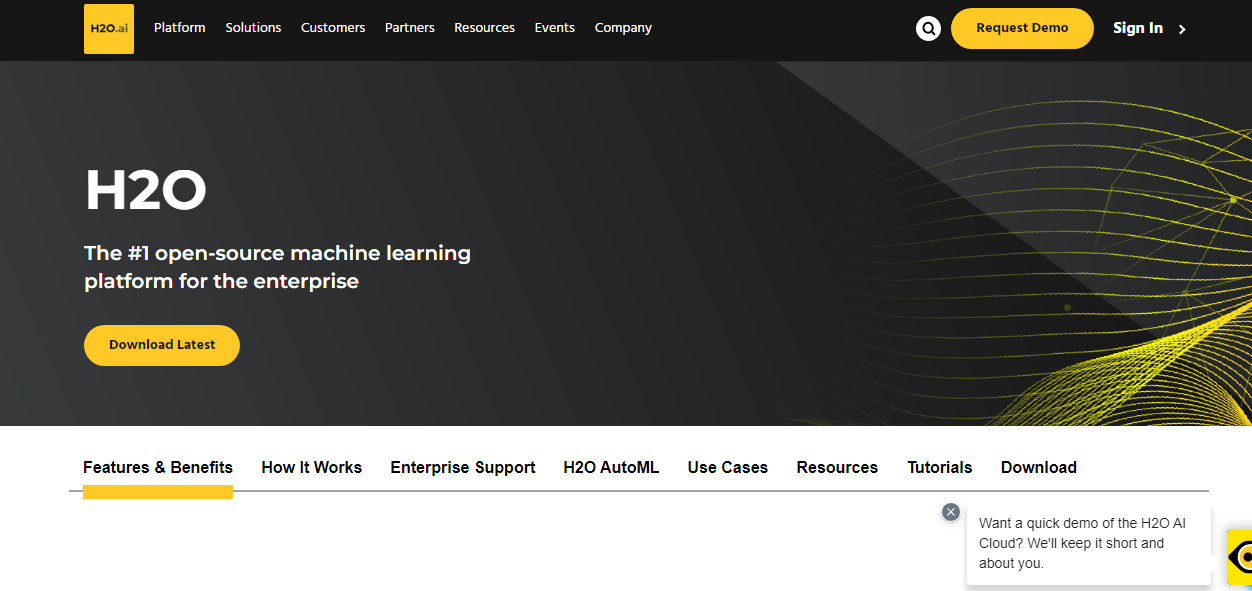
H2O.ai, a leading provider of AI and machine learning technologies, has emerged as a game-changer in the banking industry. With its cutting-edge AI platform, H2O.ai has enabled banks to leverage data-driven insights to enhance their decision-making processes.
The platform's advanced algorithms can help banks improve customer experiences, detect fraud and money laundering, and optimize risk management strategies. Additionally, H2O.ai's flexible architecture can easily integrate with existing banking systems, making it an attractive option for financial institutions looking to harness the power of AI.
By utilizing H2O.ai's AI platform, banks can drive innovation and stay ahead of the curve in an increasingly competitive industry.
Features:
- Data-driven insights
- Flexible architecture
- Fraud detection capabilities
- Risk management optimization
- Easy system integration
- Improved customer experiences
- Cutting-edge machine learning technology
- Competitive industry advantage.
3. KAI
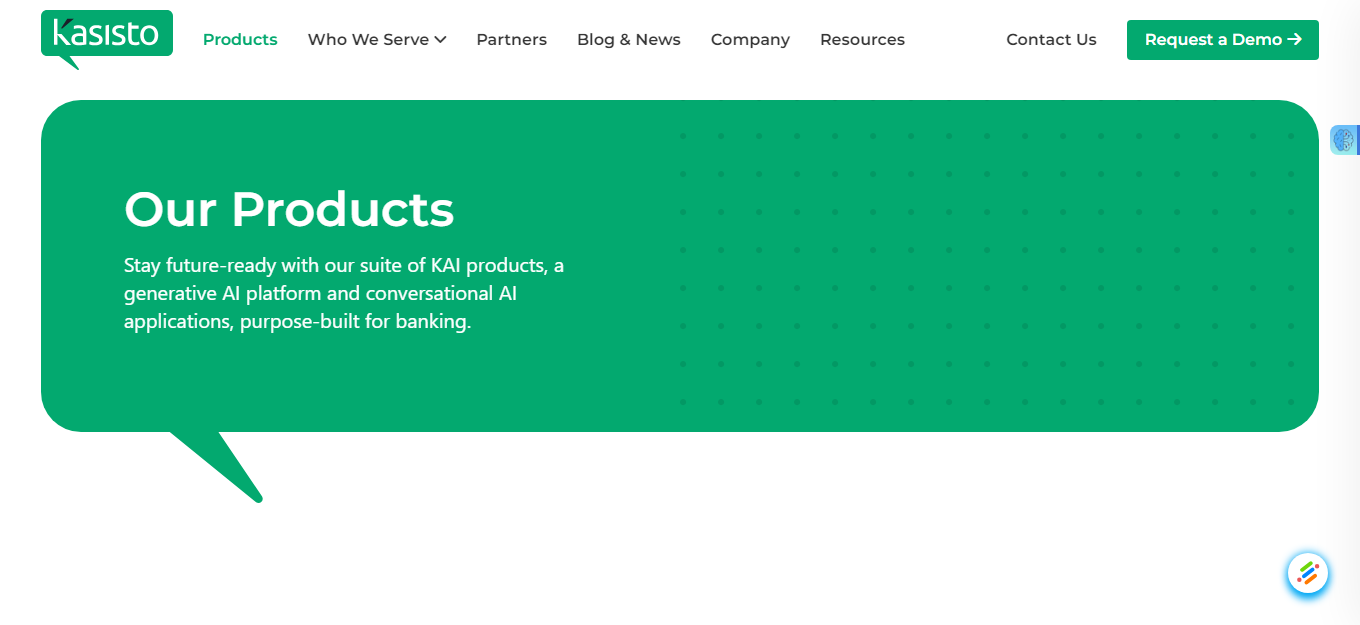
Banking KAI, or Knowledge Artificial Intelligence, is a cutting-edge technology that is gaining traction in the banking sector. This type of AI is designed to utilize complex data models and natural language processing to understand and respond to customer inquiries in real-time.
Incorporating Banking KAI into banks' operations can get a more personalized and efficient customer experience. The technology can also assist in fraud detection and prevention, risk management, and compliance monitoring. As more and more banks adopt this innovative technology, the potential for increased efficiency and profitability continues to grow.
Features:
- Personalized customer experiences
- Enhanced fraud detection
- Improved risk management
- Automated customer support
- Advanced data analytics
- Predictive modeling capabilities
- Streamlined onboarding processes
- Real-time decision-making
- 24/7 accessibility
4. Symphony AyasdiAI
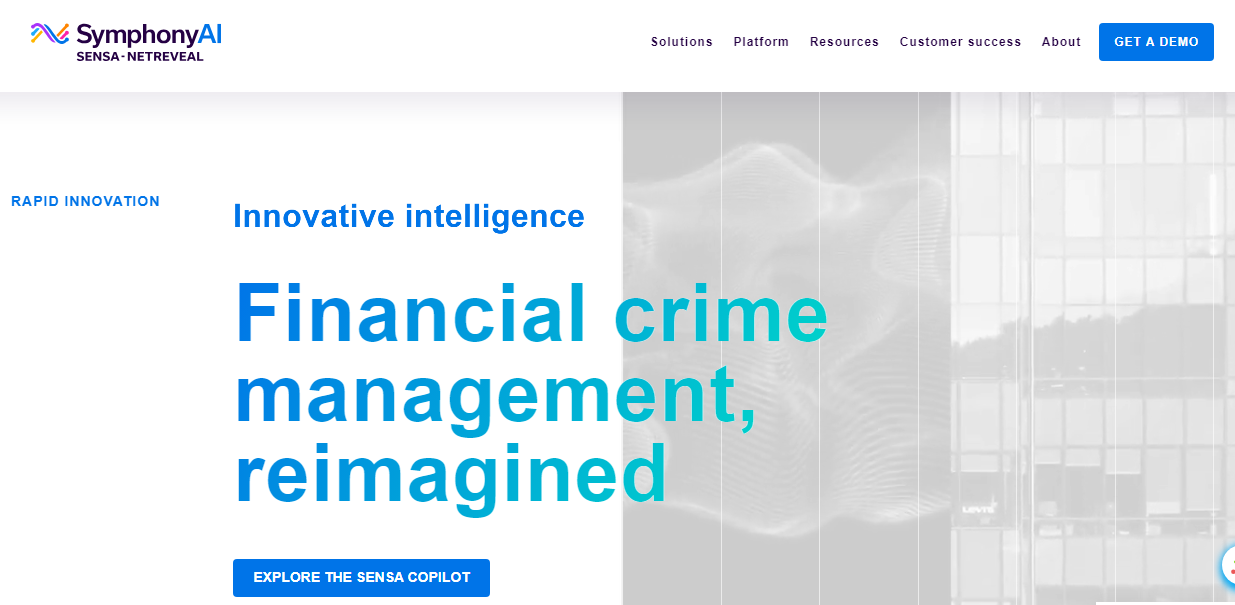
Symphony AyasdiAI is a cutting-edge AI solution that is revolutionizing the banking sector. This technology leverages the power of machine learning to help banks discover new opportunities, mitigate risks, and streamline operations. Symphony AyasdiAI can analyze vast amounts of data in real-time, allowing banks to make data-driven decisions quickly and accurately.
It helps in identifying patterns and trends that would be difficult or impossible for humans to detect, which can uncover hidden insights and make informed decisions that can drive growth and improve customer experiences. Overall, Symphony AyasdiAI is transforming the way banks operate and opening up new possibilities for the future of banking.
Features:
- Real-time data analysis
- Machine learning capabilities
- Risk mitigation
- Operational streamlining
- Pattern and trend identification
- Hidden insight discovery
- Data-driven decision making
- Enhanced customer experience
- Future-oriented technology
5. Numenta
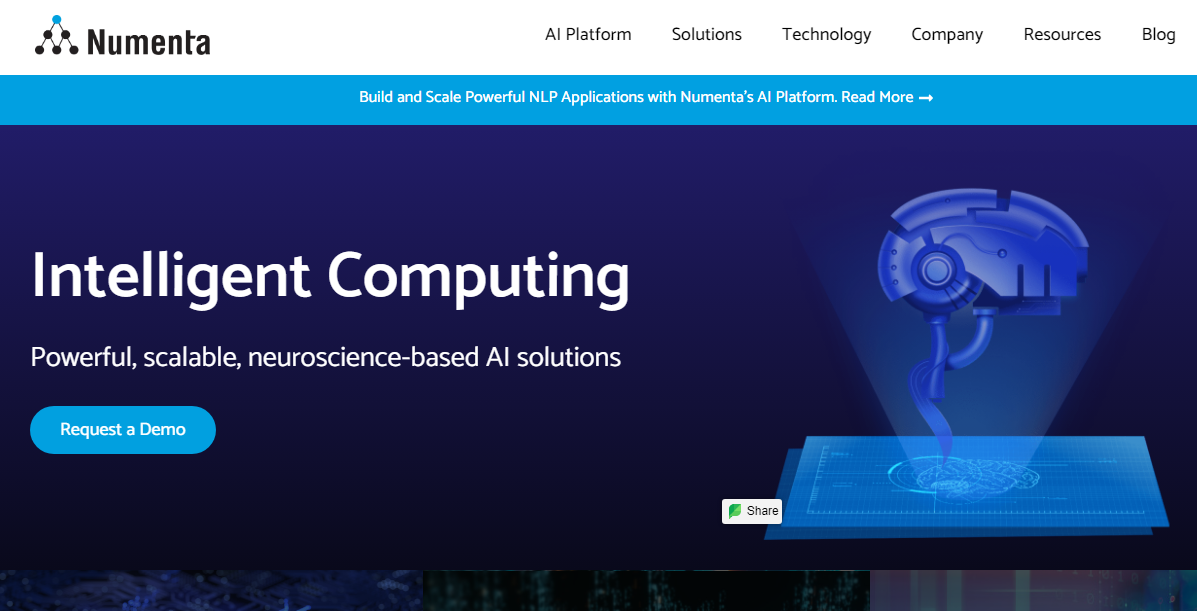
Numenta is a cutting-edge AI technology firm that has made significant contributions to the banking sector. Their technology focuses on creating intelligent machines that can learn and understand patterns in data, similar to how the human brain functions. In the banking sector, this technology has been applied to fraud detection and prevention, risk management, and compliance monitoring.
By analyzing large volumes of data in real-time, Numenta's technology can identify patterns and anomalies that might indicate fraudulent activity or non-compliance with regulations. The technology is also capable of identifying trends in customer behavior, which can help banks develop personalized offers and services. Overall, Numenta's technology has the potential to revolutionize the way banks operate and deliver value to their customers.
Features:
- Hierarchical Temporal Memory
- Pattern recognition
- Online learning
- Anomaly detection
- Continuous intelligence
6. Personetics
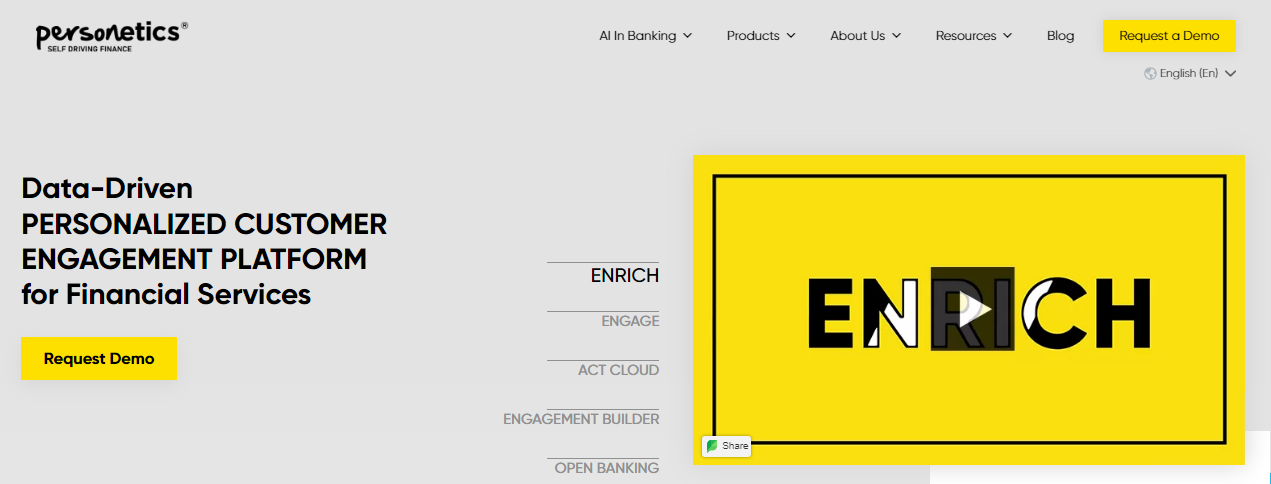
Personetics is a leading provider of AI-powered personalization and customer engagement solutions for the banking sector. The platform leverages advanced machine learning algorithms to analyze transaction data and provide personalized insights and recommendations to customers.
By utilizing Personetics, banks can improve customer engagement, drive revenue growth, and increase customer retention. The technology is particularly valuable for digital banking channels, where customers expect personalized and seamless experiences.
Features:
- Personalized financial guidance
- Predictive analytics
- Automated financial insights
- Conversational AI
- Customizable interface
- Real-time financial notifications
- Goal-based financial planning
- Behavioral insights
- Integration with existing systems
7. Kount
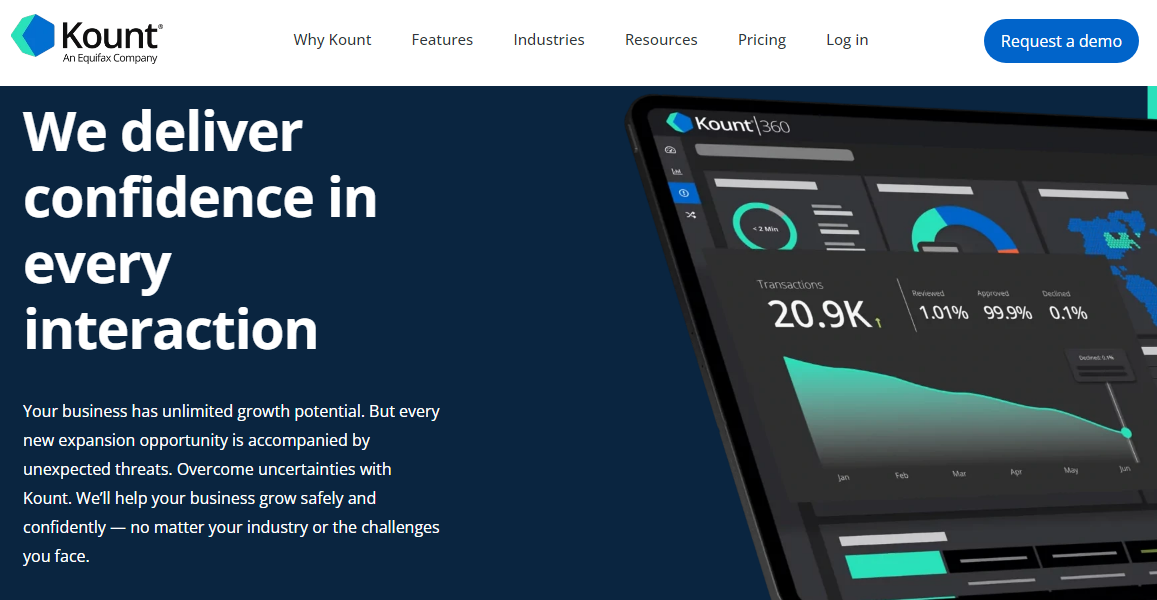
Kount is a leading provider of fraud detection and prevention solutions for the banking sector. The company's technology utilizes artificial intelligence and machine learning to analyze vast amounts of data in real time and identify patterns that could indicate fraudulent activity.
Kount's solutions can mitigate bank risks associated with payment fraud, account takeover, and other forms of financial crime. Additionally, Kount's technology provides a seamless and secure experience for customers, enhancing trust and satisfaction. Overall, Kount's innovative solutions play a crucial role in ensuring the safety and security of financial transactions in the banking sector.
Features:
- Real-time fraud detection
- Machine learning-based analysis
- Payment fraud mitigation
- Account takeover prevention
- Secure and seamless customer experience
- Multichannel protection
- Risk assessment and scoring
- Compliance with regulatory standards
- Actionable insights and reporting
8. ZestAI
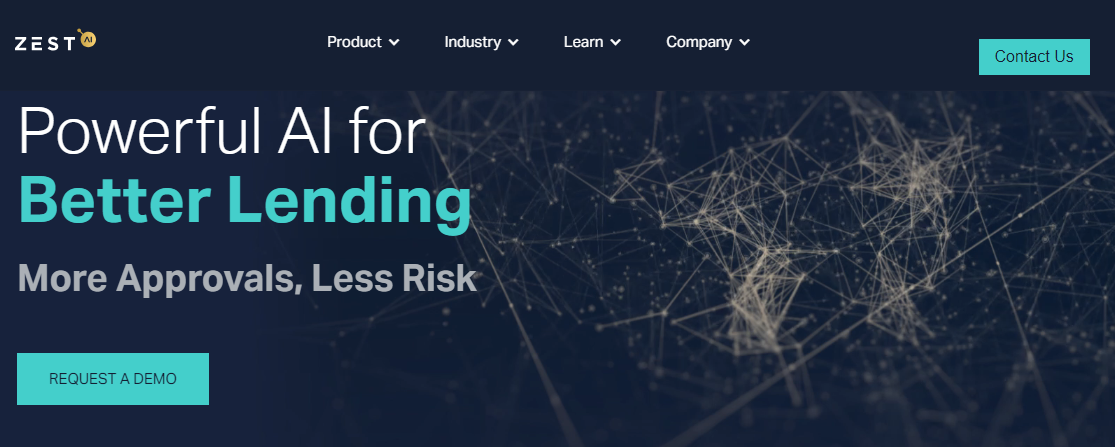
ZestAI is a cutting-edge generative AI tool that has been gaining traction in the banking sector. With its ability to generate synthetic data, ZestAI can help banks streamline their operations, particularly in areas such as know-your-customer (KYC) and anti-money laundering (AML) compliance.
The technology can also be utilized to develop more accurate and sophisticated forecasting models, enabling banks to make data-driven decisions with greater confidence.
Additionally, ZestAI's ability to analyze unstructured data can prove useful in the interpretation of loan applications and other financial documents. As such, the integration of ZestAI in the banking sector holds significant potential to increase operational efficiency and enhance decision-making capabilities.
Features:
- Predictive Analytics
- Machine Learning Models
- Data-Driven Insights
- Automated Decision Making
- Risk Assessment
- Credit Scoring
- Fraud Detection
- Real-time Recommendations
- Explainable AI
9. IBM Watson

IBM Watson is a cognitive computing system that has found numerous applications in the banking sector. This technology can assist in various areas, such as customer service, fraud detection, and risk management. By analyzing vast amounts of data and identifying patterns,
Watson can enhance the accuracy and speed of decision-making. For instance, it can help banks identify unusual activity patterns in customer accounts, allowing them to detect and prevent fraudulent activity.
Additionally, Watson can assist in compliance management by analyzing and interpreting regulatory requirements. Overall, IBM Watson has the potential to transform the banking industry by improving the efficiency and effectiveness of various processes.
Features:
- Cognitive computing system
- Analyzes vast amounts of data
- Enhances decision-making
- Detects and prevents fraud
- Assists in compliance management
- Improves efficiency and effectiveness
- Identifies unusual activity patterns
- Interprets regulatory requirements
- Potential to transform the banking industry
10. ComplyAdvantage
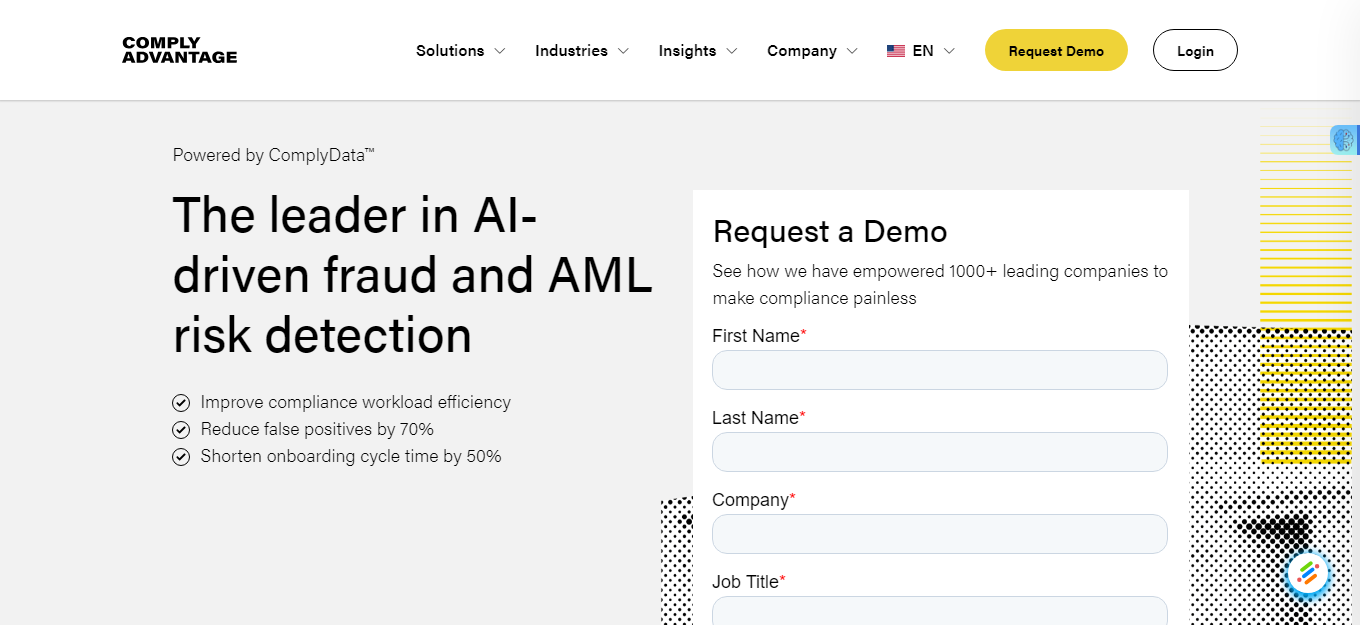
ComplyAdvantage is a leading company that provides AI-powered solutions to address compliance and risk management challenges in the banking sector. By leveraging machine learning and natural language processing technologies, ComplyAdvantage helps financial institutions identify and mitigate potential risks related to money laundering, terrorism financing, and other financial crimes.
Their advanced solutions provide real-time monitoring of transactions and customer activities, enabling banks to stay compliant with regulations and protect themselves against financial crimes. ComplyAdvantage's innovative technology has been widely adopted by the banking industry and has earned them numerous accolades, including being named to the Forbes Fintech 50 list for three consecutive years.
Features:
- Anti-money laundering (AML) screening
- Sanctions screening
- Politically exposed persons (PEP) screening
- Adverse media monitoring
- Real-time data updates
Quick Points to Remember When Opting for Generative AI Financial Services
Key steps to hire the best generative ai financial services include:
- Understand the purpose.
- Ensure data quality and privacy
- Choose the appropriate Generative AI Model
- Ensure regulatory compliance
- Maintain human oversight and interpretability.
- Monitor and update models regularly
- Seek transparency and explainability
- Manage risks effectively
- Test and validate before deployment
- Collaborate with Generative ai Financial Services
How Generative AI is Shaping the Banking & Financial Services?
Incorporating generative AI into banking operations requires strategic investments in infrastructure and personnel. Banks must prioritize the development of customized AI algorithms tailored to their specific needs. Additionally, hiring Machine learning developers and leveraging machine learning services will ensure effective oversight of this transformative technology. By focusing on these crucial aspects, banks can seamlessly integrate generative AI and unlock its full potential in the banking sector.
Generative AI tools have immense potential in the banking and finance industry. Are you ready to take your banking operations to the next level? Look no further than RedBlink, a generative AI development company who provide services tailored specifically for the banking sector.
In an era where technological advancements are reshaping the financial landscape, RedBlink stands out as a leader in harnessing the power of generative AI to drive innovation and efficiency in banking operations. If you're looking for experienced ChatGPT developers in the field of generative AI in the banking and finance industry, RedBlink is here to assist you. Contact us today to explore how our team can help you harness the power of generative AI for your specific industry needs.
Contact us today to learn more about how we can help you prepare for the future of banking with generative AI.
Android vs iOS: Which Platform is Best for Business App Development?
Android vs iOS App Development
Have you ever wondered - Which platform will be better for business app development, Android or iOS?
Absolutely! It's a crucial decision for businesses developing a mobile app. Android and iOS are dominant players in the mobile operating system market, each with its strengths and weaknesses.
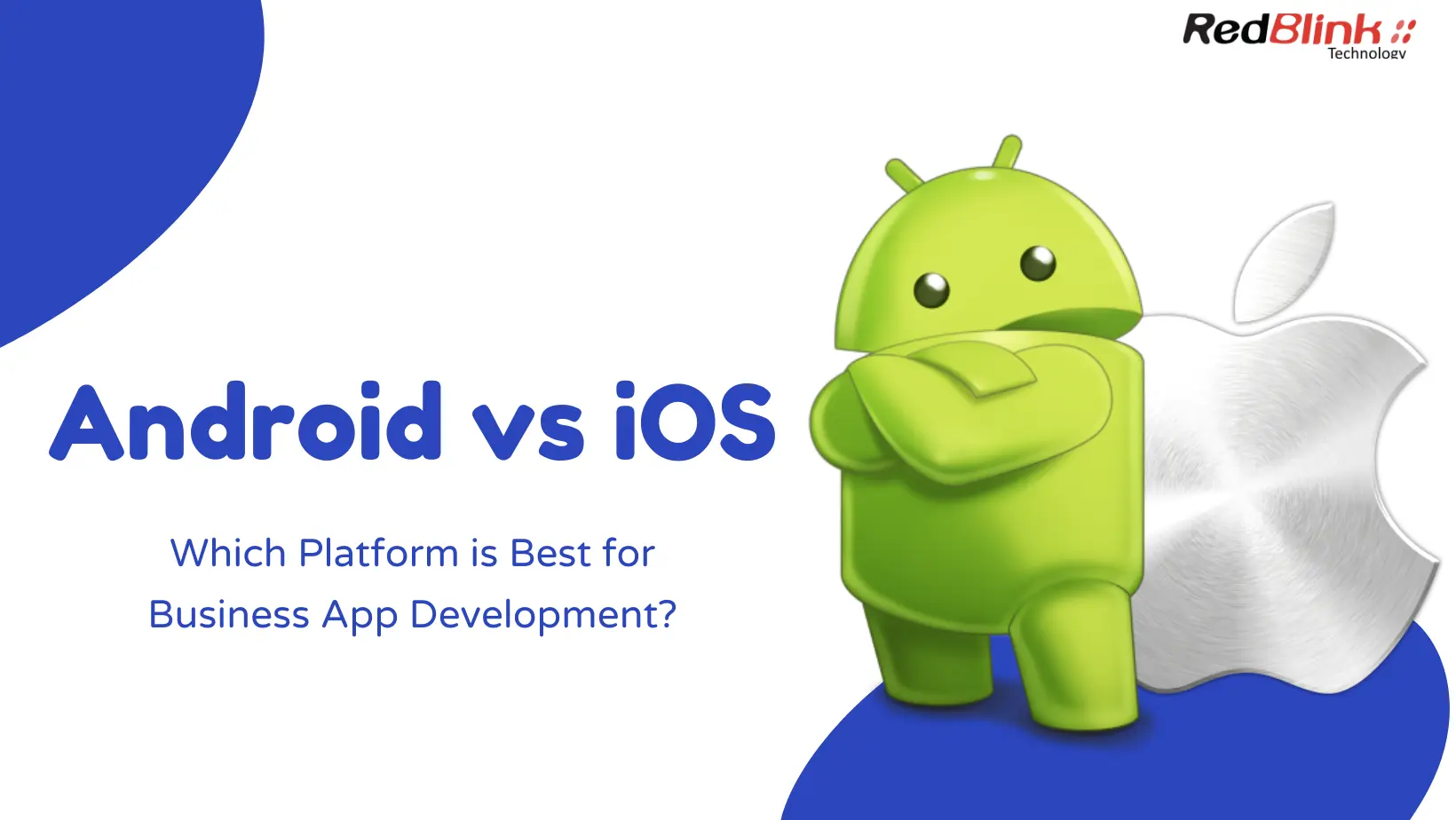
Android OS, developed by Google, has the largest global market share and offers customization and flexibility due to its open-source nature. iOS, developed by Apple, is known for delivering a premium user experience and a curated app marketplace.
But, it's also worth considering that Android devices come in various models and price points, catering to a broader demographic. This diversity provides businesses with a larger potential user base, especially in emerging markets where affordability plays a significant role.
And, iOS devices, on the other hand, maintain a loyal customer base, known for their higher average income and spending power. This can be advantageous for businesses targeting a specific niche or looking to create a seamless, high-end user experience.
So, when choosing between Android and iOS, businesses should evaluate their target audience, app requirements, and business goals, considering factors like market share, device fragmentation, revenue potential, and development complexity.
Ultimately, the platform choice should align with the business's objectives, user preferences, and budget, as a well-executed app can enhance brand visibility, engage customers, and drive revenue growth.
By understanding each platform, businesses can make informed decisions and develop successful, user-centric mobile apps. So, let's explore the key factors in more detail when choosing between Android and iOS for app development.
iOS VS Android Business App Development Comparison: Its Statistics
Android and iOS are the two dominant smartphone operating systems (OS) in the market. An OS serves as the interface that connects hardware and software, facilitating seamless user experiences.
-
Popularity and Revenue Generation
When comparing Android and iOS app development, it's essential to consider their popularity and revenue generation statistics.
-
- According to Business of Apps, as of 2022, iOS, despite holding less than 15 percent of the total market share, leads in revenue generation for app development. This is because of the popularity of Apple phones (iPhones) in high-income regions such as Japan and the US, where iOS users have more spending capabilities.
- On the other hand, Android's largest markets are in India, Southeast America, and Southeast Asia, which results in lower revenue per user compared to iOS.
- In 2021, the combined app monetization of Android and iOS reached $133 billion, marking a 19.7 % Y/Y increase. Globally, consumer spending on the App Store will reach $85.1 billion, up 17.7 percent Y/Y from $72.3 billion in 2020.
- Although users have spent less on Google Play, that platform will see more Y/Y growth, climbing 23.5 percent to $47.9 billion from $38.8 billion.
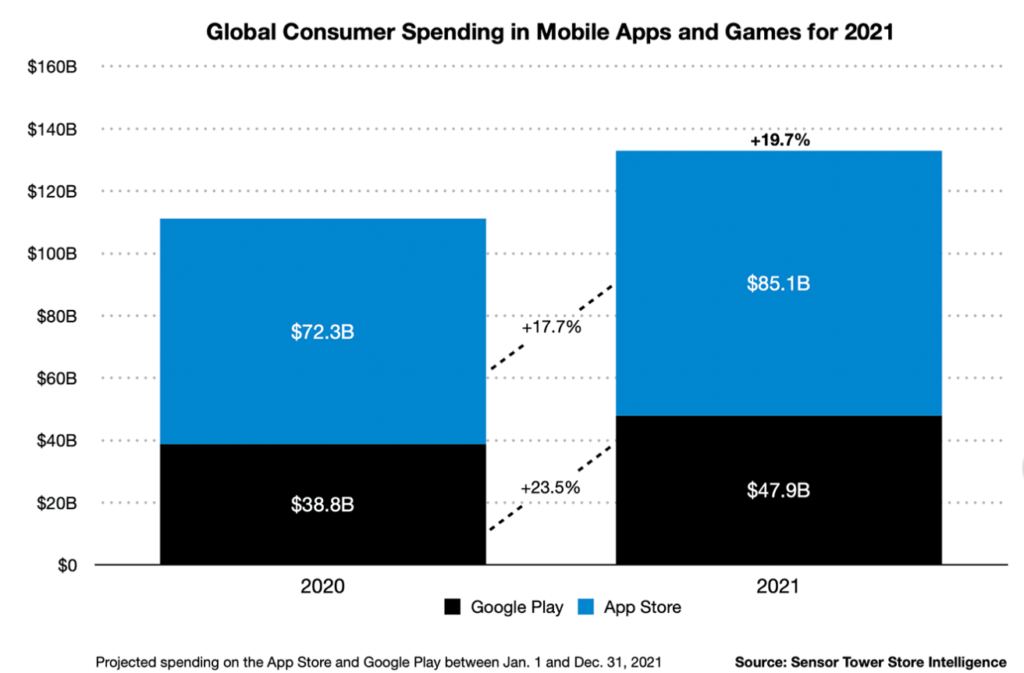
Image source: sensortower.com
-
- Although Android has experienced a 167 % revenue increase over the last 4 years, it still falls behind Apple's app store in terms of total yearly revenue.
-
App Market Growth and Subscription Revenue
-
- In 2021, U.S. consumers spent a total of $40.7 billion on in-app purchases, with approximately 21 percent of that amount being attributed to the top subscription apps. This marks an increase of over 3 percentage points compared to 2020 when the top subscription apps accounted for $5.9 billion or roughly 17.9 percent of the overall spend of $33 billion.
-
- While Google Play generates less revenue compared to iOS, the overall Android ecosystem has been consistently growing each year.
-
Consumer Age Preference
-
- According to a December 2021 survey in the United States, 58 percent of smartphone users aged 18 to 34 preferred iPhones, while 53 percent of those aged 35 to 54 preferred Android phones like Samsung or Google smartphones.
Hence, these factors can help businesses gain insight into Android and iOS' popularity and revenue potential, assisting them in making informed app development decisions.
A Detailed Overview Of Android and iOS Platforms
Here are the following detailed differences between both platforms. Take a look:
Android Platform
The Android platform is known for its versatility and customization options. Key features and characteristics of the Android platform include:
- Versatility: Android is an open-source platform, allowing developers to customize and modify the operating system according to their needs. This flexibility enables the creation of diverse and innovative apps.
- Wide Market Share: Android holds the largest market share globally, making it a popular choice for app developers. Its presence spans across various devices, including smartphones, tablets, and smart TVs.
- Large User Base: The wide market share translates into a large user base for Android. The platform appeals to a broad demographic, from budget-conscious users to those seeking high-end devices, providing developers with a vast audience to target.
iOS Platform
The iOS platform is known for its sleek design and seamless user experience. Key features and characteristics of the iOS platform include:
- User-Friendly Interface: iOS is recognized for its intuitive and user-friendly interface, making it easy for users to navigate and interact with apps. The platform prioritizes simplicity and consistency in design.
- Quality Control: Apple has stringent quality control measures in place, resulting in a more curated app marketplace. This ensures that apps on iOS devices meet certain standards of performance, security, and user experience.
- Loyal User Base: iOS devices maintain a loyal customer base, with users often willing to spend more on apps and in-app purchases. This demographic is typically associated with higher average income and spending power, making iOS an attractive platform for businesses targeting specific niches or premium experiences.
Businesses can make informed decisions when developing apps and reaching their target audience by understanding the key features, characteristics, and market share of both Android and iOS platforms.
Factors to Consider in Business Mobile App Development
In today's digital era, mobile apps have become an integral part of any business strategy. However, developing a successful app requires careful planning and consideration of various aspects.
In this comprehensive guide, we will delve into the key factors that play a significant role in business mobile app development.
-
User Base and Market Reach
Understanding your target audience and their preferences is essential for developing an app that resonates with them. Analyzing user demographics, geographical distribution, and user behavior can help determine the platforms (Android, iOS, or both) that are most relevant to your target audience.
TechCrunch reports that the average price of in-app purchases on the App Store has risen by 40% from July 2021 to July 2022. In contrast, the Play Store only experienced a 9% increase during the same period. This information is crucial for businesses aiming to optimize their return on investment (ROI) when developing mobile apps.
This way, companies can decide whether to target an audience that prefers free apps (Android users) or those who prefer to purchase apps (iOS users).
Moreover, it is essential to pay careful attention to demographics. Consider which group will find your idea most appealing and how much time they typically spend on their mobile devices and apps. Assess the benefits they can derive from using your app and, most importantly, what sets you apart from competitors in the market.
-
Development Process
Understanding the development process of a mobile app is crucial for effective planning, resource allocation, and successful execution. Here are key factors to consider:
-
- App Functionality and Integration: The process of an app depends on its features and integration requirements. To effectively handle complex functionalities, evaluate your hiring team's technical expertise or collaborate with experienced developers. This includes advanced functionalities, real-time data synchronization, complex algorithms, and external system integration.
-
- User Interface Design and User Experience: A successful app requires a visually appealing and intuitive user interface (UI). The complexity of UI design depends on the app's purpose, target audience, and desired user experience (UX). It is crucial to strike a balance between functionality and simplicity. To enhance the overall user experience, conduct usability testing and gather user feedback to refine the app's design.
-
- Backend Infrastructure and Security: The app's backend infrastructure involves server setup, database management, data storage, and security considerations. Depending on your app's scale and complexity, investing in a robust backend infrastructure becomes necessary. This ensures seamless performance, data integrity, and protection against cyber threats. Collaborate with experienced backend developers and implement industry-standard security practices to mitigate risks and safeguard user data.
-
The Cost and Time of Development
When comparing the cost of mobile app development, iOS tends to be quicker, simpler, and more cost-effective. This discrepancy is largely influenced by the coding languages utilized by each platform.
Android development relies on Java, which requires writing a larger volume of code, thereby increasing development time. Additionally, Android's open-source nature leads to a lack of standardization, resulting in a greater variety of devices, components, and software changes that developers must account for.
In contrast, iOS development utilizes Swift, Apple's native programming language. Swift is known for its user-friendliness and alignment with the needs of iOS developers. Consequently, less time is spent on coding, resulting in reduced expenses and development time.
Similarly to Android, iOS is not an open-source platform. However, it strongly promotes software standardization to ensure the seamless operation of the app across all devices it is designed for. This saves time during development and reduces future expenses associated with bug fixes.
-
Time to Market
In today's fast-paced business environment, time to market plays a significant role in achieving success. To streamline your app's launch, consider the following:
-
- Agile Development Approach: Embrace an agile development approach to release essential features quickly. Break the development process into smaller sprints, conduct regular reviews and testing, and address issues promptly. This approach reduces overall development time.
- Prioritization and Minimum Viable Product (MVP): Identify core features for the initial launch and prioritize their development. Focusing on essential functionalities expedites the development process. Consider launching a Minimum Viable Product (MVP) with minimum features and gathering user feedback for subsequent updates and improvements.
- Development Tools and Frameworks: Utilize development tools, frameworks, and libraries to accelerate development. These resources provide pre-built components and modules, reducing the need for building from scratch. However, ensure the selected tools align with your app's requirements while balancing efficiency and customization.
-
Ecosystem Control and Fragmentation
Android, being an open-source platform, offers more customization and freedom for app development. However, this freedom comes with the trade-off of dealing with fragmentation. The Android ecosystem comprises a wide range of devices, screen sizes, and operating system versions. Ensuring app compatibility across this fragmented landscape can be a challenge.
On the other hand, iOS maintains stricter control over app standards and guidelines, resulting in a more consistent user experience across devices. However, this control can limit customization options and require adherence to specific guidelines.
Understanding the level of ecosystem control and fragmentation helps you align your app development strategy accordingly, ensuring a seamless user experience across different platforms and devices.
Android vs iOS App Development - Comparison
Here's a comparison table highlighting the factors you mentioned for iOS and Android platforms:
| Factors | iOS | Android |
| Programming Languages and Development Tools | Swift, Objective-C, Xcode | Java, Kotlin, Android Studio |
| App Design and User Interface Guidelines | Human Interface Guidelines (HIG) | Material Design Guidelines |
| App Store and Distribution Process | App Store | Google Play Store |
| Security and Privacy Considerations | Strong emphasis on security and privacy | Open-source nature may introduce some security concerns |
| Cost Considerations | Expensive to develop and publish apps | Cheaper development and publishing options |
| Hardware and Device Fragmentation | Limited hardware options (Apple devices) | Wide range of devices with different screen sizes and resolutions |
| Development Complexities | Requires compliance with strict guidelines | More flexible development options |
| Integration and Compatibility | Tight integration with the Apple ecosystem | Greater integration with third-party platforms |
| Revenue Generation and Monetization Options | Higher revenue potential through app sales | Multiple monetization options (ads, in-app purchases, etc.) |
Android vs iOS App Development: Which One To Choose?
Two mobile operating systems, Android and iOS, are highly sought after in the market. In the past, iOS had a larger app selection compared to its arch-rival. Due to its substantial user base and profitability, many developers initially focused on creating apps for Apple iOS.
However, the landscape has changed significantly. When considering the overall market share for mobile operating systems, Android now reigns supreme.
But, if you are looking for iOS and Android app development company, determine the right mobile operating system depending on various factors, including your target audience, demographics, and more.
When to Choose Android App?
Opting to develop for Android first is a suitable choice if you aim to reach a broader worldwide audience and maximize your app downloads. Particularly in regions such as India, China, and UAE, where Android apps are widely used, you can achieve a higher return on investment.
If you intend to monetize your app through in-app advertisements, designing it for Android may prove more profitable due to the larger number of Android users and downloads.
Consider the preferences of your target audience for specific features and the flexibility that Android provides for implementing those features.
When to Choose iOS App?
Choosing iOS as your primary platform is ideal when you want to build a minimum-viable product. Additionally, if your target audience resides in the USA and UK, it may be advantageous to prioritize iOS development, as users in these regions tend to use iOS devices more frequently.
iOS is also a preferred option if you intend to monetize your apps without relying on in-app ads. Offering in-app purchases and premium editions of your app can be more successful on iOS, as iOS users are more likely to engage in such transactions.
Ultimately, the type of app you plan to create and your target audience's preferences will play a significant role in determining the platform that best suits your needs.
Still Can't Decide?
In the battle of iOS versus Android, there is no universal winner. The key is to evaluate your goals and choose the platform that best aligns with them.
It is not always clear-cut which platform is the right choice. It requires experience and expertise to navigate this decision-making process.
Fortunately, RedBlink is here to help. We have a wealth of knowledge and expertise in iOS and Android development.
If you find yourself still uncertain about whether to choose iOS, Android, or even both platforms, we invite you to schedule a FREE consultation with us today. Our team will be happy to assist you in sorting out the best approach for your specific needs.
Don't let the decision overwhelm you. Let RedBlink be your trusted partner in making the right choice for your mobile app development journey.
How To Hire the Best AI / ML Consultants or an Engineer in 2024
Hire AI ML Consultants or an Engineer
Did you know that hiring the right AI & Machine Learning Consulting Services can be a game-changer for your business? According to Cross River Therapy, 77% of companies are either using or exploring its potential. Among them, 35% have successfully implemented AI, while an additional 42% are actively planning its future integration.
With the increasing importance of data-driven decision-making and advanced technologies, finding the best AI consultants has become crucial.
To help you navigate the process of hiring the best ai consultants, we've created this comprehensive guide. By the end of this article, you'll have the knowledge and insights needed to make informed decisions and hire the perfect consultants for your AI and machine learning needs.
Hiring the best AI & Machine Learning consultants brings a host of benefits, including:
Expertise and Specialization: Best Artificial Intelligence Consulting Providers possess deep knowledge and experience in their respective domains. They stay up-to-date with the latest advancements, ensuring your organization benefits from cutting-edge solutions.
Business Optimization: Consultants can help you identify areas where AI and machine learning can streamline operations, optimize processes, and enhance efficiency. By leveraging their expertise, you can achieve tangible business outcomes.
Cost-Effectiveness: Engaging consultants on a project basis allows you to access specialized skills without the need for long-term commitments. This cost-effective approach enables you to allocate resources efficiently and make the most of your budget.
According to a recent study conducted by Precedence Research in 2024, the market size of artificial intelligence (AI) reached $87.04 billion in 2021.
The study further projects that this figure is expected to nearly double, reaching $164.99 billion by 2024. Looking ahead, the global AI market is anticipated to surpass $1.5 trillion by 2030, indicating a remarkable Compound Annual Growth Rate (CAGR) of 38.1 percent from 2022 to 2030.
Role & Responsibilities of Ai Ml Consultants
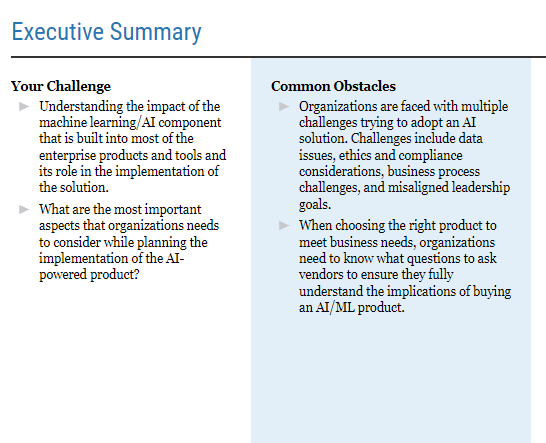
AI/ML consultants are highly skilled professionals who provide specialized expertise in the field of artificial intelligence and machine learning. These consultants assist companies & businesses in designing, implementing, and integrating AI solutions that align with their unique business requirements.
They evaluate the organization's data, software infrastructure, and technology capabilities to determine the feasibility of deploying AI systems and workflows effectively. AI/ML consultants leverage various cutting-edge techniques and technologies to deliver value-added solutions to their clients. These may include:
- Predictive analytics
- Data Science
- Natural language processing (NLP)
- Computer vision
- Process automation
- Voice-enabled technology
By collaborating closely with stakeholders, AI/ML consultants provide strategic recommendations and guidance on implementing AI solutions that drive business growth, enhance operational efficiency, and improve customer experiences.
Are you eager to know about the importance of AI and Machine Learning Consultants in 2024? Look no further! Our insightful presentation provides concise and to-the-point information on this topic. It covers essential areas such as an introduction to AI and Machine Learning, the growing significance of AI and Machine Learning Consultants, real-world use cases and applications, and key considerations when selecting AI Consultants.
Get Ahead of the Game with Our Expertly-Crafted PPT Guide
Top Tips When Hiring AI & ML Consultants or an Engineer
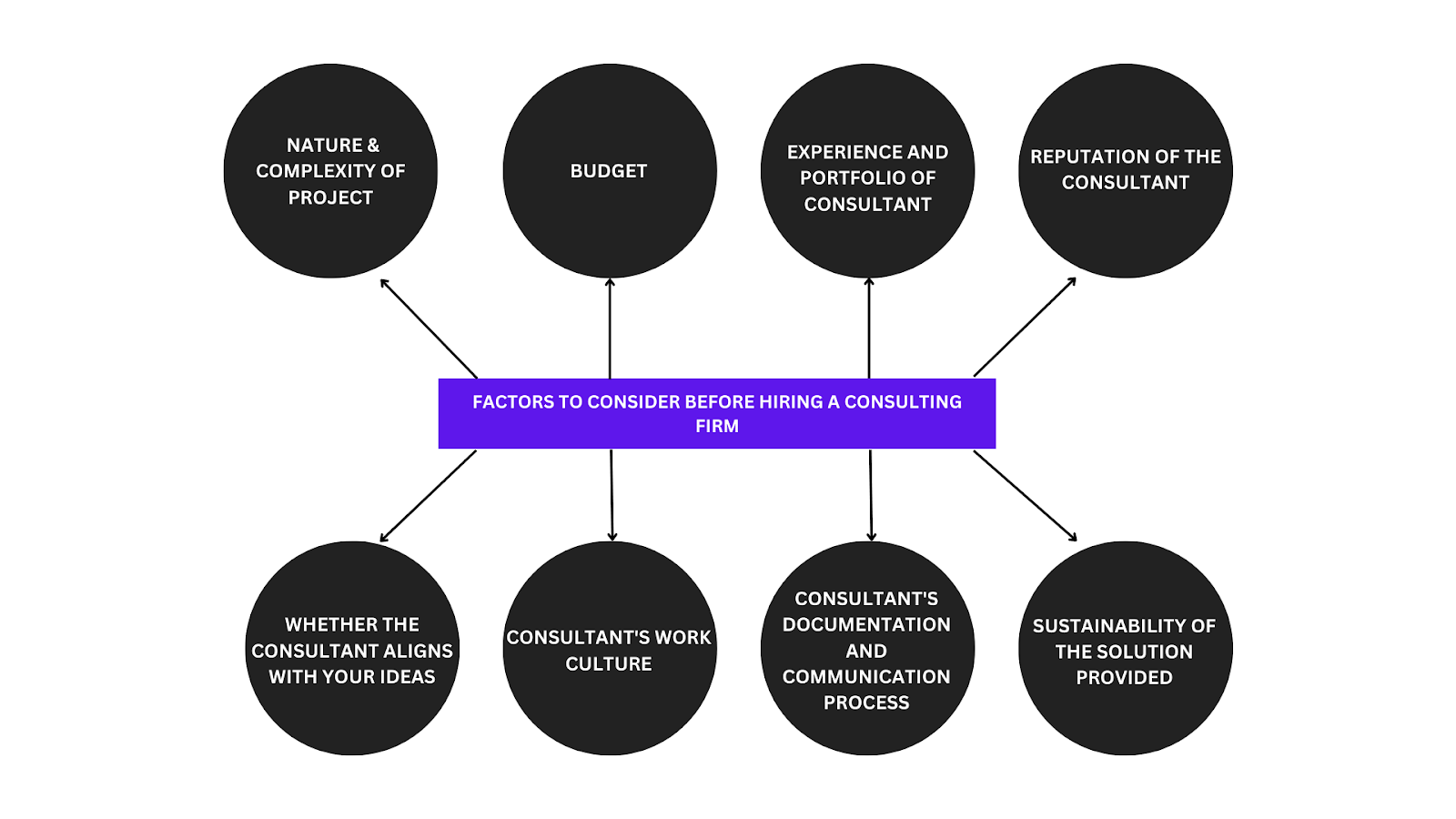
The field of AI and machine learning is highly complex and ever-evolving. Without the right expertise and guidance, organizations may struggle to navigate the intricacies of these technologies effectively.
1. Assessing Business Challenges and Goals
Before embarking on the search for Artificial Intelligence Consulting Services, it's crucial to have a clear understanding of your organization's specific challenges and goals. Start by asking yourself the following questions:
- What are the key pain points in your business that AI and machine learning can address?
- What are your long-term goals and how can AI and machine learning contribute to their achievement?
- What specific outcomes or results are you expecting from implement
- ing AI and machine learning solutions?
By defining your business challenges and goals, you can effectively communicate your requirements to potential consultants and ensure alignment throughout the hiring process.
2. Evaluating the Technical Skills & Tools of an AI Consultant
Once you understand the significance of engaging with the appropriate AI & Machine Learning Consulting firm and assess the business challenges and goals, the next step is to evaluate the technical expertise and proficiency of these AI ML consultants in relevant tools and technologies.
Consider their technical expertise and programming languages.
It is good to assess the consultants' expertise in AI and machine learning algorithms, models, and frameworks. Apart from this, determine their proficiency in programming languages commonly used in AI and machine learning, such as Python, Java, etc.
Familiarity with libraries like TensorFlow or PyTorch is also advantageous.
Additionally, you can also evaluate the knowledge and experience of these experts with popular AI and machine learning tools and platforms, such as:
3. Requesting Case Studies and Analyzing the Results an AI Engineer Can Deliver
To gain insights into the consultants' capabilities and track record, requesting case studies is super helpful to analyze their previous work. Analyzing the results they have achieved for similar projects will help you assess their competence and suitability.
Now the question is: What to look for in their case studies?
- Relevance: Evaluate how closely the case studies align with your business challenges and goals. Assess the consultants' ability to solve problems similar to yours.
- Success Metrics: Once you evaluate the consultant’s ability to solve a similar case as yours, the next step is to pay attention to the metrics and outcomes presented in the case studies. Look for evidence of tangible results, such as improved accuracy, reduced costs, or increased revenue.
- Client Testimonials: Client testimonials provide valuable insights into the consultants' professionalism, collaboration skills, and ability to deliver on promises. Seek feedback from their previous clients to gauge their reputation and client satisfaction. Analyzing case studies and results will give you a clear picture of the consultants' capabilities and the potential value they can bring to your organization.
4. Reviewing Communication and Collaboration Skills
When evaluating AI & ML Consultants, consider their clear communication, active listening, and collaborative approach. Experienced and professional consultants explain complex concepts clearly, listen actively, and work well with internal teams and stakeholders.
Choose AI consultants who excel in these areas for successful AI and machine learning initiatives.
5. Establishing Clear Project Expectations from AI ML Consultancy
To ensure successful collaboration with Machine Learning consulting & development services, it is important to establish clear project expectations. This can be achieved by defining the project scope, timeline, and deliverables.
Additionally, allocate the necessary resources from your organization and establish regular reporting and progress updates. By having clear expectations, you can foster productive collaborations.
6. Understanding the AI Consulting Process
As we all know Machine Learning is a subset of AI. To ensure a successful consulting engagement, it's essential to have a clear understanding of the consulting process. Familiarize yourself with the following key stages:
- Discovery and Assessment: ML & AI Consultants gain a deep understanding of your organization, its challenges, and its goals. They assess the feasibility and potential impact of AI and machine learning solutions.
- Solution Design: Consultants design tailored solutions to address your specific business challenges. This includes selecting appropriate algorithms, defining data requirements, and formulating a strategic approach.
- Development and Implementation: Consultants develop and implement AI and machine learning models, leveraging their technical expertise and domain knowledge.
- Testing and Validation: Rigorous testing and validation processes ensure the accuracy and effectiveness of the implemented solutions. Consultants fine-tune the models based on feedback and data analysis.
- Deployment and Integration: Consultants assist in deploying the solutions into your existing infrastructure and integrating them with your workflows and systems.
- Monitoring and Optimization: Ongoing monitoring and optimization ensure that the implemented solutions continue to deliver value. Consultants provide insights and recommendations for further improvement. Understanding the consulting process helps you align your expectations and collaborate effectively with the hired consultants at each stage of the engagement.
7. Evaluating Cost and Budget Considerations
When hiring AI & Machine Learning consultants, cost and budget are crucial considerations.
Evaluate different pricing models, such as hourly rates, fixed project fees, or retainer agreements, to find one that suits your budget. You can also assess the value and potential return on investment they offer and consider its long-term benefits.
Moreover, discuss scalability options if you plan to expand your initiatives. It is suggested to make an informed decision aligning with your financial resources and long-term goals.
8. Seeking Recommendations and Referrals
Seeking recommendations and referrals from trusted sources can greatly facilitate the hiring process. Consider the following avenues:
- Industry Peers
- Professional Networks
- Online Reviews and Ratings
- Recommendations and referrals
By doing so, you can identify consultants with a strong reputation and proven expertise, which eventually increases the likelihood of successful collaboration and achieving your project goals.
9. Performing Due Diligence and Background Checks
Before finalizing the hiring decision, it's essential to perform due diligence and conduct background checks on the shortlisted candidates. Consider the following steps:
- Check Credentials and Certifications: Verify the consultants' educational background, certifications, and any industry-recognized credentials they hold.
- Evaluate Professional Experience: Assess the consultants' previous experience, including their projects, clients, and the industries they have worked in. Look for relevant experience that aligns with your business needs.
- Contact References: Reach out to the consultants' provided references and ask specific questions about their experiences working with the consultants. Gain insights into their strengths, weaknesses, and overall performance. By conducting due diligence and background checks, you can mitigate risks and ensure that the hired AI consultants are well-suited to meet your organization's requirements.
10. Interviewing and Shortlisting AI ML Consulting Services
When interviewing and shortlisting AI & Machine Learning consulting companies, employ effective strategies to assess their capabilities and cultural fit.
Conduct technical interviews to evaluate their expertise and problem-solving skills. Use behavioral interviews to gauge communication and collaboration abilities. Assess culture fit by considering adaptability and willingness to learn.
By employing these strategies, you can make informed decisions and find consultants who align with your organization's values.
11. Making the Final Decision
When making the final decision on hiring AI & Machine Learning consulting Company, it is important to consider key factors.
Assess their alignment with your business needs and their potential to deliver desired outcomes. Prioritize candidates with a strong industry reputation and positive references
Additionally, evaluate their collaboration potential based on communication and adaptability.
By carefully evaluating these factors, you can ensure that you select the best consultants for your organization.
12. Post-Hire Support and Relationship Management
Once you have hired the AI & Machine Learning consultants, it's essential to establish a strong working relationship and ensure ongoing support. Consider the following aspects:
- Clear Communication Channels: Establish effective communication channels to facilitate regular updates, feedback, and collaboration between your internal teams and the consultants.
- Regular Check-Ins: Schedule regular check-ins to review the progress of the project, address any concerns, and provide necessary guidance or clarification.
- Performance Evaluation: Conduct periodic evaluations to assess the performance of the consultants and the impact of their solutions. Provide constructive feedback and address any issues that may arise.
By maintaining a strong post-hire support system and nurturing the relationship with the consultants, you can maximize the value they bring to your organization and ensure the long-term success of your AI and machine learning initiatives.
Quick Points to Remember When Hiring an AI ML Consulting Company
Key steps to hire the best consultants include:
- Assessing Business Challenges and Goals
- Evaluating Technical Skills and Tools
- Requesting Case Studies and Analyzing Results
- Reviewing Communication and Collaboration Skills
- Establishing Clear Project Expectations
- Understanding the AI Consulting Process
- Evaluating Cost and Budget Considerations
- Seeking Recommendations and Referrals
- Performing Due Diligence and Background Checks
- Interviewing and Shortlisting Candidates
- Making the Final Decision
- Post-Hire Support and Relationship Management
Hiring the best consultants brings benefits such as expertise, business optimization, and cost-effectiveness.
Unlock the potential of AI and machine learning for your organization. Get started today and revolutionize your business with the right expertise.
Remember, the right consultants can be a game-changer. Don't wait, take action now and stay ahead in the era of data-driven decision-making and advanced technologies with RedBlink Technologies , the best generative AI development company. RedBlink is an AI consulting and generative AI development company, offering a range of services in the field of artificial intelligence. With their expertise in ChatGPT app development and machine learning development, they provide businesses with the ability to leverage advanced technologies for various applications. By hiring the skilled team of ChatGPT developers and machine learning engineers at RedBlink, businesses can unlock the potential of AI and enhance their operations with customized solutions tailored to their specific needs.
References -
- Precedence Research. (2023). Artificial Intelligence Market Size, Share, Trends Analysis Report by Technology (Machine Learning, Natural Language Processing, Context-Aware Computing, Computer Vision), by End-Use Industry, by Region, and Segment Forecasts, 2022-2030.
- Global survey: The state of AI in 2021 by McKinsey & Company (2021): This report provides an overview of the state of AI in consulting, including the benefits of using AI, the challenges of implementing AI, and the best practices for using AI.
- AI May Soon Replace Even the Most Elite Consultants" by Harvard Business Review: The article discusses the potential impact of artificial intelligence (AI) on the consulting industry. It suggests that advancements in AI technology have the potential to disrupt and automate certain tasks traditionally performed by human consultants.
- Databases as Graphs: Predictive Queries for Declarative Machine Learning by Jure Leskovec: This research examines the transformative potential of AI and machine learning in optimizing business operations. It discusses the benefits, challenges, and key considerations for organizations seeking to harness the power of these technologies.
Generative AI for Gaming - Top 10 AI Tools for Gaming Industry
Generative AI for Gaming
As per the report by Market.us, the worldwide size of the Generative AI in the Gaming Market stood at USD 922 million in 2022, with a projected Compound Annual Growth Rate (CAGR) of 23.3%. The market is expected to witness incremental revenue of USD 7,105 million by 2032.
Game development has come a long way, and with the advancement of technology, there is an increased demand for unique and engaging gaming experiences. To achieve this, game developers are turning to generative AI tools and techniques. These tools have revolutionized the gaming industry, allowing developers to create fresh and exciting content that keeps players engaged for longer.
Leading companies in the gaming market, such as Ludo and Minecraft, have already embraced this technique to prevent their users from getting bored. The use of Artificial Intelligence (AI) and Machine Learning (ML) tools has the potential to further revolutionize the gaming world.
In this blog, we will explore how generative AI can level up your game development, and discuss some of the most effective Generative AI tools that game developers can use to enhance their work capability.
What is Generative AI in Gaming?

Generative AI in gaming is a technique that involves the use of artificial intelligence to create fresh and unique content for gamers. It is an innovative approach to game development that leverages the power of AI to generate content that is both entertaining and engaging.
At its core, Generative AI in gaming utilizes machine learning algorithms to analyze and learn from existing content. These algorithms can then generate new content based on what they have learned, providing an endless supply of fresh and exciting content for players. This technique has been adopted by major gaming companies.
Generative AI in gaming has brought about a paradigm shift in the gaming industry. With this technique, game developers no longer have to rely solely on manual content creation, which can be time-consuming and repetitive. Instead, they can use Generative AI to create new and exciting content on the fly, ensuring that players are always engaged and entertained.
How Generative AI Can Be Applied to Game Development?
Generative AI is a powerful tool that can be applied to various aspects of game development. Here are some ways that Generative AI can be used to improve the gaming experience:
- Content Creation - Generative AI can be used to create new content for games, such as levels, characters, and items. This technique can help game developers save time and resources that would otherwise be spent on manual content creation. Generative AI can also provide an endless supply of fresh and exciting content for players, ensuring that they are always engaged and entertained.
- Procedural Generation - It is a technique used in game development that involves the use of algorithms to generate game content dynamically. Generative AI can be used to improve procedural generation by creating more sophisticated algorithms that can analyze and learn from existing content. This can lead to the creation of more realistic and immersive game environments that are tailored to each player's preferences.
- Player Behavior Prediction - Generative AI can also be used to predict player behavior and adjust game mechanics accordingly. For example, if a player is repeatedly failing at a particular level, the game can adjust the difficulty level automatically to ensure that the player remains engaged. This technique can also be used to personalize the gaming experience for each player, providing them with content that is tailored to their preferences and skill level.
- Dynamic Game Difficulty - Generative AI can be used to dynamically adjust game difficulty based on player performance. This technique can help keep players engaged and challenged without making the game too difficult or too easy. With Generative AI, game developers can create games that are challenging but still enjoyable for players of all skill levels.
- Intelligent NPCs - Generative AI can also be used to create more intelligent non-playable characters (NPCs) in games. NPCs can learn from player behavior and adjust their actions accordingly, creating a more realistic and immersive gaming experience. This technique can also be used to create more challenging opponents for players, providing them with a more rewarding gaming experience.
- Bug Detection and Fixing - Generative AI can also be used to detect and fix bugs in games. By analyzing player behavior and feedback, AI can identify bugs and provide suggestions for fixing them. This can improve the overall quality of the game, providing a better gaming experience for players.
- Dialogue Generation - This is another application of Generative AI in game development. It involves using machine learning algorithms to create dialogue that is more natural and realistic. This can enhance the overall gaming experience, making it feel more immersive and engaging.
- Art Generation - Generative AI can also be used to create art assets for games. By analyzing existing art assets and generating new ones based on learned patterns, Generative AI can create new and unique visual styles that enhance the overall look and feel of a game.
- Dynamic Soundtracks - Generative AI can be used to create dynamic soundtracks that adjust based on the player's actions and the game environment. This can create a more immersive and engaging gaming experience, enhancing the overall game atmosphere.
- Adaptive Difficulty - Generative AI can be used to adjust the difficulty level of a game based on the player's skill level. This technique ensures that the game remains challenging, yet enjoyable, for players of all skill levels.
Generative AI has the potential to revolutionize game development in numerous ways. From content generation to personalization, this technique can enhance the overall gaming experience and provide new opportunities for developers to create unique and engaging games.

Generative AI Tools for Gaming in 2024
As the gaming industry continues to push the boundaries of creativity and innovation, generative AI tools have become invaluable for game developers. These cutting-edge tools harness the power of artificial intelligence to create unique and dynamic game content that enhances gameplay experiences. Here are some of the best generative AI tools that game developers can use to level up their game development process:
1. Unity ML-Agents

Unity ML-Agents, short for Unity Machine Learning Agents, is an open-source toolkit developed by Unity Technologies that integrate machine learning capabilities into the Unity game engine. It allows game developers to create intelligent agents that can learn, adapt, and make decisions autonomously within game environments.
Unity ML-Agents provides a bridge between the fields of artificial intelligence and game development, enabling developers to create games with realistic and dynamic AI-driven characters, behaviors, and gameplay experiences.
Features:
- Reinforcement learning integration
- Autonomous agent behavior creation
- Training of intelligent agents
- Real-time decision-making capabilities
- Customizable and adaptive AI
- Simulated game environment creation
- Multi-agent coordination and competition
- Support for various machine learning algorithms
- Interactive and dynamic gameplay experiences
- Open-source and community-driven development.
2. Houdini
https://vimeo.com/441339532
Houdini is a powerful and versatile procedural content creation software developed by SideFX, a leading provider of 3D animation and visual effects tools. It is widely used in the entertainment industry, including game development, film production, and virtual reality experiences. Houdini's generative AI capabilities are integrated into its procedural modeling, animation, and visual effects tools, allowing game developers to create complex and realistic game content with unparalleled flexibility and control.
Features:
- Procedural modeling and animation.
- Vast terrain generation.
- Realistic visual effects.
- Customizable game asset creation.
- High flexibility and control.
- Efficient and scalable workflow.
- Dynamic and interactive game content.
- Integrated generative AI capabilities.
- Complex and realistic game worlds.
3. Promethean AI
Promethean AI is a cutting-edge technology that combines artificial intelligence with creative design. It is a generative AI tool that uses deep learning algorithms to automatically generate 3D models, animations, and visual effects for various applications, including video games, virtual reality experiences, and movies.
Promethean AI allows artists and designers to quickly create complex and realistic digital content by inputting simple instructions or concepts, which are then transformed into detailed and visually appealing assets. This innovative technology revolutionizes the creative process by streamlining and automating content creation, empowering artists and developers to bring their visions to life with unprecedented speed and efficiency.
Features:
- Streamlined 3D asset creation.
- Automated visual effects creation.
- Realistic and detailed output.
- Speedy and efficient workflow.
- Empowers artists and designers.
- Versatile application across industries.
- Simplified concept-to-asset process.
- Cutting-edge deep learning algorithms.
- Revolutionizes creative content creation.
4. Tensorflow
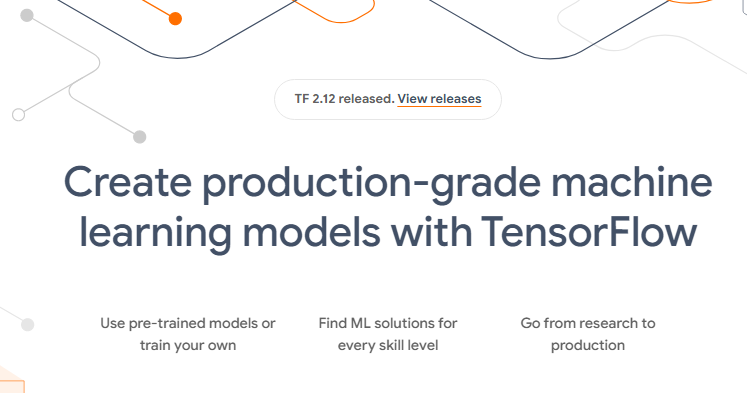
TensorFlow is an open-source machine learning and deep learning framework developed by Google. It provides a robust platform for building and training neural networks to perform various tasks, such as image and speech recognition, natural language processing, and recommendation systems.
TensorFlow allows developers to create complex machine-learning models using a flexible and intuitive programming interface. It provides a vast array of pre-processing functions, optimization algorithms, and visualization tools, making it a comprehensive framework for building cutting-edge machine-learning applications. TensorFlow is widely used by researchers, developers, and data scientists to develop and deploy machine learning models in diverse industries, including healthcare, finance, gaming, and more.
Features:
- Flexible and intuitive programming interface.
- Extensive pre-processing functions.
- Optimization algorithms for efficiency.
- Visualization tools for model understanding.
- Wide community support.
- Scalable for large datasets.
- GPU acceleration for faster training.
- Deployment across various platforms.
- Versatile for diverse industries.
5. GameSynth

GameSynth is a cutting-edge procedural sound design tool designed for game developers. It is a software suite that utilizes generative algorithms and AI-based techniques to create dynamic and interactive audio content for video games.
With GameSynth, game developers can easily generate a wide variety of sounds, such as sound effects, ambient noises, music, and more, with high levels of customization and control. GameSynth's intuitive interface and extensive library of sound modules make it a powerful tool for creating realistic and immersive audio experiences in games.
From generating realistic footsteps to crafting unique creature sounds, GameSynth empowers game developers to create rich and dynamic soundscapes that enhance the overall gameplay experience.
Features:
- Procedural audio synthesis
- Real-time interactive sound design
- Dynamic audio parameter control
- Versatile sound effect generation
- AI-driven audio creation
- Interactive soundscapes creation
- Realistic sound texture generation
- Adaptive audio generation techniques
- Rapid sound prototyping capabilities
- Extensive audio asset library.
6. NVIDIA GameWorks
NVIDIA GameWorks is a suite of advanced graphics technologies and tools developed by NVIDIA, a leading technology company known for its graphics processing units (GPUs).
GameWorks is designed to help game developers create visually stunning and realistic games by leveraging NVIDIA's cutting-edge GPU capabilities. It includes a wide range of features such as realistic physics simulations, advanced lighting and shading techniques, realistic hair and fur rendering, dynamic particle effects, and more.
GameWorks provides developers with a powerful set of tools and libraries that can be integrated into their game engines, helping them achieve higher levels of graphical fidelity and visual effects for a more immersive gaming experience on NVIDIA GPUs.
Features:
- Advanced Graphics Rendering Techniques
- Physics Effects & Visual Effects
- Realistic Water Simulation
- Advanced Anti-Aliasing Techniques
- Immersive Audio and Sound Effects
- Efficient GPU Performance Optimization
- Realistic Character Animation
- Lighting and Shadows.
7. AIVA
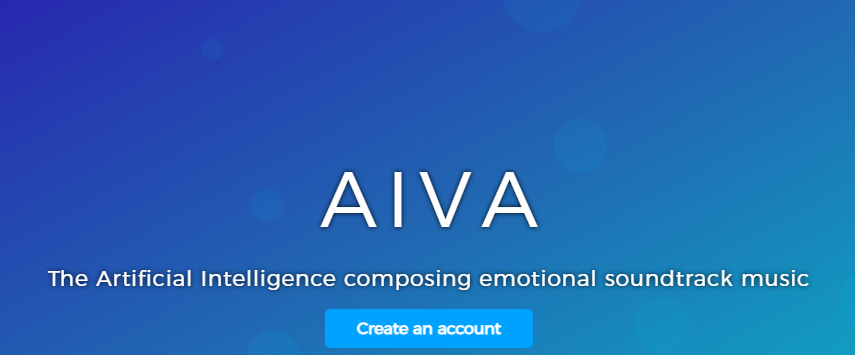
AIVA is an AI-powered music composition tool that uses deep learning algorithms to create original music compositions. It has been used in various industries, including advertising, film, and now, game development. AIVA can produce unique and customizable music tracks that fit the tone and atmosphere of a particular game or scene.
This tool could be particularly useful for game developers who want to create immersive and engaging soundtracks for their games without having to rely solely on human composers. With AIVA, game developers can quickly and easily generate high-quality audio content that enhances the overall gaming experience.
Features:
- AI-powered music composition tool.
- Customizable music tracks.
- Deep learning algorithms.
- Original music compositions.
- Immersive audio content.
8. PolyGen

PolyGen is a generative art tool that uses AI to create unique and intricate polygonal designs. Users can customize the shape, size, and complexity of the polygons, as well as choose from a variety of color schemes and patterns. The AI algorithm generates different variations of the design based on these inputs, allowing for endless possibilities.
PolyGen can be used for a variety of applications, including digital art, graphic design, and game development, where unique and visually striking designs are in high demand. The tool is user-friendly and accessible to both novice and experienced designers, making it a popular choice in the creative community.
Features:
- Procedural texture generator
- Customizable parameters
- Real-time preview
- High-resolution output
- Seamless tiling
9. ArtBreeder
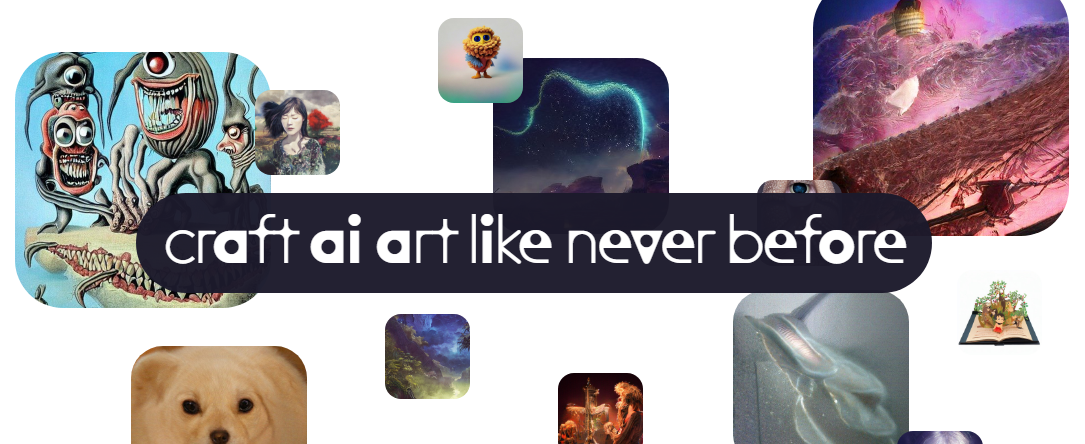
ArtBreeder is a web-based application that allows users to create, explore, and evolve images using generative adversarial networks (GANs) and other machine-learning techniques. Users can mix and match traits from different images, creating new variations that can be further refined and evolved.
The resulting images can be used for a variety of purposes, including game development, graphic design, and art. ArtBreeder has gained popularity in recent years as a tool for generating high-quality, unique images quickly and easily, without the need for extensive artistic skills or knowledge of complex software.
Features:
- Image mixing and evolution
- Generative adversarial networks (GANs)
- Web-based application
- Easy to use
- High-quality images
10. Neural MMO
Neural MMO is an experimental online multiplayer game that uses deep reinforcement learning (DRL) to generate a dynamic, open-world environment. In Neural MMO, players control agents that can learn and adapt to their surroundings in real-time, based on a combination of pre-defined rules and machine learning algorithms.
The game's developers hope that Neural MMO can serve as a platform for testing and advancing the capabilities of DRL, as well as a fun and engaging game in its own right. The game is still in development but has already attracted attention from the research community such as Microsoft Game Dev Community and could have implications for the future of online gaming and artificial intelligence.
Features:
- Persistent game world
- Large-scale multiplayer support
- Open-source architecture
- Agent-based AI system
- Player-driven economy
- Procedurally generated content
- Deep reinforcement learning
- Dynamic quest generation
- Interactive chat system
- Cross-platform compatibility.
Generative AI in Game Development - Best Practices
Here are the best practices for implementing generative AI in game development:
- Setting Clear Goals and Objectives
- Identifying specific areas where generative AI can be useful
- Defining success metrics and benchmarks for AI-generated content
- Establishing an Effective Workflow
- Collaborating with artists, designers, and programmers to integrate AI tools and techniques into the game development process
- Ensuring proper version control and testing procedures for AI-generated content
- Designing Data Pipelines and Datasets
- Collecting and preprocessing data to train generative AI models
- Balancing the need for diversity and creativity with the need for consistency and quality control
- Selecting Appropriate AI Techniques
- Choosing the right types of generative AI models for the specific task at hand
- Evaluating the trade-offs between different AI techniques, such as GANs, RNNs, and CNNs
- Incorporating Human Feedback and Supervision
- Incorporating feedback from human experts to improve the quality and relevance of AI-generated content
- Implementing systems for monitoring and regulating AI-generated content to avoid inappropriate or offensive results
- Optimizing Performance and Scalability
- Identifying potential bottlenecks and performance issues in AI-generated content
- Using parallel processing and other optimization techniques to improve performance and scalability
- Balancing Creativity and Automation
- Finding the right balance between human creativity and AI automation in game development
- Leveraging generative AI to augment human creativity and accelerate game development, rather than replace it entirely.
Future of Generative AI in Gaming
By using advanced machine learning techniques to generate content and environments in real-time, game developers can create more dynamic, immersive, and engaging gameplay experiences for players. As AI tools and techniques continue to improve, we can expect to see more games that leverage the power of generative AI to create new and exciting worlds, characters, and gameplay mechanics.
As the technology continues to evolve, game developers will need to stay up-to-date on the latest advancements in generative AI to stay competitive and deliver compelling gaming experiences to players. RedBlink is a top-rated Generative AI Development Company known for delivering cutting-edge web and software solutions. We harness the power of advanced Generative AI applications to drive innovation and foster growth.
Discover the game-changing potential of Generative AI in gaming with RedBlink, a generative AI app development company! As an AI Consulting Company we offer a revolutionary approach, enhancing game development and creating immersive experiences. Harness the power of AI-driven algorithms to generate stunning visuals, lifelike characters, and dynamic environments.
References
- Artificial Intelligence-Driven Serious Games in Health Care
- Generative Personas That Behave and Experience Like Humans
- Evolving Levels for General Games Using Deep Convolutional Generative Adversarial Networks
- Designing Participatory AI: Creative Professionals’ Worries and Expectations about Generative AI by Nanna Inie
Top 10 Generative AI Applications Use Cases & Examples [2024]
Generative AI Applications Use Cases
Generative AI technology is revolutionizing content creation by quickly producing animated, textual, and visual material that is both novel and realistic. With a diverse range of applications, generative AI is poised to transform numerous industries, including surveillance, healthcare, marketing, advertising, education, gaming, communication, and podcasting. As a result, generative AI has become one of the most important technological trends of the year.
According to Gartner's 2022 Emerging Technologies and Trends Impact Radar report, generative AI is considered a highly disruptive and rapidly advancing technology. Incredibly, the report predicts that generative AI will be responsible for generating 10% of all data (up from less than 1%) and 20% of test data for consumer applications by 2025. Moreover, by the same year, it will be utilized in 50% of drug discovery and development projects.
And this doesn’t only stop there.
The technology is expected to have an even greater impact on the manufacturing industry, with a staggering 30% of manufacturers predicted to employ it to enhance their product development process by 2027. Hence, generative AI is creating significant buzz, and rightfully so - it's an essential piece of technology to keep an eye on.
In this article, we'll introduce you to the top 10 generative AI applications that you should know in 2024.
Do You Know What is Generative AI Application?
The technological landscape is in a constant state of evolution and is leading us toward a new industrial environment where humans are working with intelligent machines. These smart machines are embedded with various cognitive technologies such as artificial intelligence and machine learning.
Generative AI, a technology that utilizes AI and ML algorithms to create new videos, text, images, audio, or code, is one such smart machine. Driven primarily by these algorithms, it has the ability to identify underlying patterns in input and generate superior-quality outputs that are similar. It's a collection of smart algorithms working together in the background.
To dive deeper into the topic of Generative AI, you can explore this post that discusses the difference between Generative AI Vs Machine Learning Vs Deep Learning.
Currently, there are two primary generative AI models - GANs (Generative Adversarial Networks) and transformer-based models. GANs are especially effective in generating visual and multimedia content from text and images. Meanwhile, transformer-based models like GPT (Generative Pre-Trained) language models can absorb information from the Internet and generate all kinds of text, such as website articles, press releases, or whitepapers.
Vertex AI is a cutting-edge solution that enables easy interaction, customization, and integration of foundational models into applications without extensive machine learning expertise. It provides access to various foundation models through the Model Garden and offers a user-friendly interface, Generative AI Studio, for model tuning. With Vertex AI, models can be seamlessly utilized within data science notebooks.
Thanks to Vertex AI, CNA's AI scaling and machine learning model management in production have undergone a remarkable transformation. With this large model support feature, CNAs can now customize their insights to cater precisely to the specific business requirements of both their customers and colleagues, setting a new standard in personalized AI solutions.
Generative AI Applications Use Cases
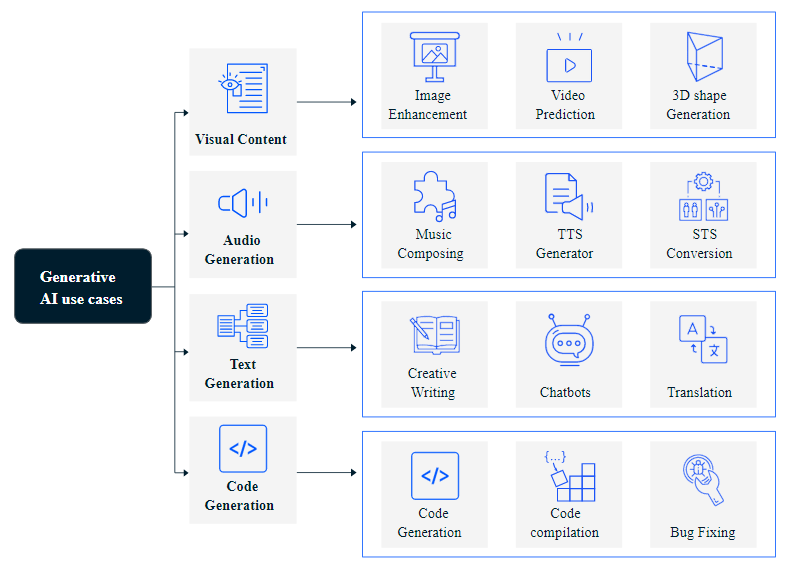
Source - leewayhertz
It's not surprising that generative AI is a crucial tool that organizations across industries must adopt. With its numerous beneficial contributions across industries, it has become the new buzzword in today's business environment.
Let’s take a look at the best generative AI applications that may help in enhancing your business operations.
1. Content Generation
Generative Artificial Intelligence (AI) is a technology that uses algorithms to generate content that mimics human-written content. This type of AI is becoming increasingly popular as businesses and individuals seek to automate content creation and save time and resources.
The use of generative AI in content generation involves training machine learning models with large amounts of existing text, such as articles, books, and social media posts, to learn the patterns and rules of human language. Once trained, these models can generate new text that is similar in style and tone to the input data.
Examples: ChatGPT, Google Bard, ChatSonic, Jasper AI, etc.
When comparing ChatGPT 3.5 and ChatGPT 4, it becomes evident that these advanced language models have revolutionized content generation. If you're interested in diving deeper into the topic, I recently came across a fascinating analysis comparing the capabilities of ChatGPT 3.5 vs. ChatGPT 4, you must checkout.
2. Image Generation and Editing
Generative AI has opened up new avenues for transforming text into images and generating realistic images based on specific settings, subjects, styles, or locations. This allows users to quickly and easily generate visual material that can be used for various purposes, such as media, design, advertising, marketing, education, and more.
For instance, an image generator can assist a graphic designer in creating any desired image. By providing a semantic image or sketch, the generator can produce a realistic version of the image.
The process of creating images involves changing the external aspects of the image, such as its color, medium, or form while retaining its core elements. Super-Resolution GANs, which are based on GAN (Generative Adversarial Network) technology, can be used to produce high-resolution versions of images. This is especially beneficial for producing high-quality versions of archival or medical materials that are not cost-effective to save in high-resolution format. Another use case is for surveillance purposes.
Examples: Dall-E-2, Photosonic, DeepAI, etc.
3. Music Generation
Are you interested in becoming a successful music producer? If so, then you might want to consider using generative AI to help you create unique and original tunes for all kinds of creative projects. One of the key benefits of generative AI is that it can produce purposeful music that is specifically designed for use in advertisements or other creative endeavors.
Examples: Amper Music, AIVA, Soundful, MuseNet
4. Voice Generator
Generative Adversarial Networks (GANs) are capable of producing lifelike audio speech. In order to achieve this, discriminators act as trainers, emphasizing, toning, and/or modulating the voice to create a convincing output.
The text-to-speech (TTS) generation process has numerous business applications, including education, marketing, podcasting, and advertising. For instance, educators can transform their lecture notes into audio files to make them more engaging. Similarly, this technique can also be beneficial for creating educational content for individuals with visual impairments. TTS not only eliminates the need for expensive voice actors and equipment but also provides a wide range of language and vocal options for companies to choose from.
Generative AI can also be used for voice generation by utilizing existing voice sources through speech-to-speech (STS) conversion. This technique allows for the quick and easy creation of voiceovers, which is advantageous for industries such as gaming and film. With these tools, it is possible to generate voiceovers for documentaries, commercials, or games without the need to hire a voice actor.
Examples: Replica Studios, Synthesys, Murf, Listnr, Lovo, Speechelo, etc.
5. 3D Shape Generation
3D shape generation refers to the process of creating three-dimensional models of objects using computer algorithms. The goal is to generate digital models that closely resemble physical objects in terms of their size, shape, and texture.
This technology has many practical applications in fields such as product design, architecture, and entertainment. One approach to 3D shape generation involves using Generative Adversarial Networks (GANs), a type of artificial intelligence algorithm that involves two neural networks working together to create realistic and detailed models.
Generative AI in Product Design & Development has revolutionized the way 3D shape generation is approached. By harnessing the power of algorithms, designers can now create digital models that closely resemble physical objects in size, shape, and texture.
Examples: 3DFY.ai, Alpha3D, Sloyd.ai, etc.
6. Code Generation
Generative AI has found a new application in software development, where it is being used to create code without the need for manual input. This exciting new technology makes coding accessible to both professionals and non-technical individuals alike.
One of the most significant benefits of generative AI in coding is its ability to suggest code completions as developers type. This feature saves valuable time and minimizes errors, especially when dealing with repetitive or monotonous tasks. Additionally, it can help detect and resolve bugs in the generated code by analyzing code patterns and identifying potential issues before suggesting solutions. Furthermore, generative AI can ensure that the code adheres to style guidelines, promoting consistency and readability throughout the codebase.
Examples: OpenAI Codex, Copilot, ChatGPT, AlphaCode, Tabnine, etc.
Also, explore the extraordinary capabilities of ChatGPT and the multitude of benefits it brings. Take a moment to peruse this insightful post about ChatGPT: What Is It & How Can You Use It for Code Generation and Other Use Cases?
In the world of generative AI, the Code Conductor platform stands out as a powerful tool for no-code application development. Code Conductor empowers users to create applications without writing a single line of code. Its intuitive drag-and-drop interface and extensive library of pre-built components make it easy to design and deploy various applications.
Whether you're building responsive websites, crafting dynamic mobile applications, or creating software solutions, Code Conductor offers a seamless and user-friendly experience. It eliminates the barriers for non-technical users, enabling them to participate actively in the application development process.
With Code Conductor, you can unleash your creativity and bring your innovative ideas to life effortlessly.
Learn more about the capabilities of Code Conductor and experience the power of no-code development in the world of generative AI.
7. Video Generation and Editing
Artificial Intelligence (AI) has the remarkable ability to create videos, ranging from short clips to full-length movies. It does this by using image generation to produce the visual elements, text generation to compose a script or storyboard, and music generation to compose a soundtrack.
AI can accept various types of input data such as images, blogs, articles, and music, which it can then creatively manipulate and combine to create something entirely new and original.
It's like a futuristic robot director, but with extraordinary abilities. Suppose you've ever dreamed of watching a video featuring a colossal robot engaged in a fierce battle with a massive octopus while accompanied by a death metal soundtrack. In that case, generative AI might be the solution to bringing your imagination to life.
Examples: Descript, Synthesia, Deepbrain AI, Xpression Camera, Elai.io, etc.
8. Chatbots and Virtual Assistants
Chatbots and virtual assistants are AI-generative applications designed to interact with humans and provide them with information or assistance in a conversational way. Chatbots are typically used for customer service or support, while virtual assistants can perform a wider range of tasks, such as scheduling appointments or playing music.
These applications use natural language processing (NLP) to understand and interpret user input, and then use machine learning algorithms to generate a response or perform a task. Some chatbots and virtual assistants are rule-based, meaning they follow a predetermined set of rules and can only respond to specific types of questions or requests. Others use deep learning algorithms to continuously learn and improve their responses over time.
Examples: Google Assistant, Siri, Cortana, etc.
9. Art and Design
What exactly is AI-generated art, you might ask? Well, generative AI has many uses, and one of its most fascinating applications is creating novel and unique works of art.
It's important to note that AI-generated art differs from image generation, even though they both fall under the umbrella of generative AI. Image generation is all about producing new images, while AI-generated art aims to create something entirely new and original without any human intervention.
For example, let's consider abstract paintings. In the past, artists would have had to laboriously create each stroke of the brush by hand, but now, generative AI can produce an entirely new masterpiece without any human assistance! And if you're into creative writing, AI can even produce a novel entirely on its own. It's truly remarkable!
Examples: DALL-E 2, Nightcafe, Starryai, etc.
10. Game Development
Game Development AI generative application refers to the use of artificial intelligence (AI) techniques to generate various aspects of video game content. This can include generating game levels, characters, objects, and even entire game narratives.
Generative AI techniques can be used to create unique and varied game content, providing players with more engaging and enjoyable experiences.
AI can also be used to create non-playable characters (NPCs) with unique personalities and behaviors, making them feel more like real people rather than simply scripted characters. Additionally, AI can be used to generate in-game items, such as weapons or items that players can collect, giving players a sense of discovery and progression.
Examples: Charisma AI, Hidden Door, Unity Machine Learning Agents, Houdini, etc.
Generative AI Applications Use Cases Across Industries
The use of Generative AI has the potential to bring about a paradigm shift across multiple sectors. Let's delve into some instances of its application:
- Logistics and Transportation - Generative AI accurately converts satellite images into comprehensive map views, allowing previously unknown places to be discovered. For logistics and transportation companies venturing into new areas, this technology proves particularly valuable in facilitating seamless navigation.
- Travel Industry - Within the realm of the travel industry, Generative AI emerges as a valuable asset in facial recognition and verification systems deployed at airports. By creating a comprehensive visual representation of passengers using photos captured from diverse angles, this cutting-edge technology simplifies the process of identifying and validating individuals, thereby enhancing security protocols.
- Healthcare - Harnessing the power of generative AI algorithms empowers the healthcare sector to streamline drug discovery procedures. These algorithms facilitate the identification of potential drug candidates, expediting the overall process through computer simulations that evaluate their efficacy. This advancement accelerates the pace of new drug discovery, leading to enhanced patient care.
- Retail - Generative AI empowers retailers to heighten the customer experience by delivering personalized messages tailored to individual consumers. Whether via email or online platforms, this technology ensures the dissemination of relevant product information, optimizing the shopping journey. Additionally, this technology can identify indicators of fraudulent activities, such as phishing attempts, thereby bolstering security measures.
- Supply Chain - Generative AI plays a pivotal role in enabling businesses to forecast the demand for specific products and services, thereby optimizing their supply chain operations. This valuable insight aids in reducing inventory costs, enhancing order fulfillment efficiency and minimizing wastage and excess stock.
- Energy Sector - Generative AI exhibits its prowess in the energy sector by enabling accurate predictions of solar and wind output based on weather data and historical production records. This empowers grid integration optimization and equips stakeholders with the ability to manage the inherent variability of these renewable resources. Moreover, Generative AI plays a pivotal role in optimizing the distribution and transmission of electricity, taking into account crucial factors such as load balancing, congestion management, and asset utilization. Furthermore, it enables the prediction of energy market prices and volatility, utilizing historical data and market trends to facilitate optimized trading strategies.
- Marketing - Generative AI aids in customer segmentation, offering valuable predictions regarding target audience responses to advertising and marketing campaigns. This sophisticated technology empowers businesses to refine their marketing strategies, effectively targeting specific audiences and ultimately boosting sales.
These use cases across various industries exemplify the transformative potential of generative AI. As this technology continues to evolve, businesses can unlock new realms of innovation and drive progress in their respective domains.
Generative AI: Recent Developments
The rapid evolution of technology, including mobile and cloud computing, has sparked a wave of innovation among developers that embark on new business ventures, envision innovative products, and redefine their creative processes. Now, there is another transformative shift with AI, which is profoundly impacting every industry.
To support developers exploring AI, the introduction of PaLM API - a user-friendly and secure platform to leverage our top-notch language models. At present, the efficient model comes in several sizes, and more sizes are coming soon.
The API also includes the MakerSuite tool, which provides you with quick prototype ideas. In the future, MakerSuite will offer additional features like prompt engineering, synthetic data generation, and custom-model tuning, all reinforced by robust safety measures. Some developers have early access to the PaLM API and MakerSuite through Private Preview, and others can join the waitlist for future access.
Google has made a commitment to being the most open cloud provider, and in line with this, they are broadening their AI ecosystem and specialized programs to include technology partners, startups, and software providers that prioritize AI development.
Takeaway
The top 10 generative AI real-world applications of 2024 are set to revolutionize various industries, from entertainment to healthcare and beyond. With the increasing power and sophistication of generative AI techniques, we can expect to see even more innovative applications emerge in the coming years. If you're looking for experienced ChatGPT developers in the field of generative AI applications, RedBlink is here to help.
As a provider of cutting-edge web and software solutions, RedBlink is a leading Generative AI Development Company, utilizing cutting-edge generative AI applications to fuel innovation and foster growth. Whether you're looking to create engaging content for your customers, optimize your operations, or drive breakthrough discoveries in your field, start using multiple AI tools such as ChatGPT AI Tools & Products to bring both effectiveness and quality.
Looking to leverage the transformative power of Generative AI? RedBlink's Artificial Intelligence Consulting Services offer unmatched expertise in harnessing the potential of this technology. From enhancing creative processes to automating content generation, their solutions drive innovation across industries. Discover how RedBlink can empower your business with cutting-edge AI strategies.
Enterprise AI vs Generative AI - Benefits, Differences, Challenges
Enterprise AI vs Generative AI
In the present day and age, Digital Transformation has become the paramount priority in virtually every sector, and this process continues to progress at a rapid pace. Organizations that once relied solely on manual operations are now gradually embracing automated methods. And, all this is possible due to the integration of Artificial Intelligence.
Since more and more companies start investing in AI, Enterprise AI, and Generative AI have emerged as the two sides of a coin. Now, you might be wondering what exactly are Enterprise AI and Generative AI.
Well, in the short term, we can say that Enterprise AI is a machine learning and artificial intelligence application used for routine business activities, whereas Generative AI utilizes machine learning and artificial intelligence to enable machines to synthesize existing content on the web and generate counterfeit content such as audio, video, text, and images. The benefits of Enterprise AI to society are distinct from those of Generative AI.
Understanding the key differences between these two types of AI is important for businesses looking to leverage AI technologies to enhance their operations. In this article, we will explore the key differences and benefits of enterprise AI and generative AI. So, let’s take a look!
Enterprise AI vs Generative AI Explained
1. Enterprise AI, also known as business AI, is artificial intelligence that focuses on enhancing business operations, performance, and efficiency. It involves the use of data analysis, machine learning algorithms, and automation tools to solve complex problems and streamline various tasks.
Enterprise AI Benefits
Enterprise AI can assist businesses in enhancing customer support, which can be a powerful tool for driving sales. By leveraging virtual chatbots, monitoring customer behavior, and enhancing customer-business interactions, enterprises can improve their support offerings, and drive sales.
As marketing is a significant contributor to business growth, Enterprise AI can help develop innovative marketing strategies that would be challenging to achieve with traditional techniques. Therefore, businesses can leverage this technology to create a competitive edge in the market and drive growth.
- Enhance Efficiency: Enterprise AI helps to automate repetitive and time-consuming tasks, allowing employees to focus on more critical and creative tasks.
- Improve Decision-Making: By leveraging data analysis, Enterprise AI provides insights and predictions that enable better decision-making and risk management.
- Enhance Customer Experience: With Enterprise AI, businesses can provide personalized and efficient customer service, increasing customer satisfaction.
- Cost Savings: By automating tasks and improving operational efficiency, Enterprise AI helps businesses reduce costs and increase profitability.
- Competitive Advantage: Businesses that adopt Enterprise AI can gain a competitive advantage by optimizing their operations and delivering better products and services to customers.
For instance, AI-powered fraud detection systems can analyze transactions and identify potential fraudulent activity before it occurs.
2. Generative AI, also known as creative AI, is a type of artificial intelligence that focuses on creating new content, such as art, music, or text, that can be used for various purposes. Generative AI uses neural networks, natural language processing, and other techniques to generate new content based on existing patterns and structures. Here are some benefits of Generative AI
Generative AI Benefits
Leveraging Generative AI can enable businesses to automate tasks and save valuable resources such as time and money. Moreover, it can enhance the efficiency of operations, thereby delivering a positive impact on overall business performance.
Notably, one of the key benefits of this technology is the ability to create relevant images aligned with the text in real time, a feature that marketers can leverage to create brand awareness and hype. Beyond efficiency, Generative AI also promises to deliver high-quality output in the form of audio, video, images, and text.
- Improve Creativity: Generative AI can help humans generate new ideas and concepts by providing new perspectives and insights.
- Increase Productivity: By automating the creative process, Generative AI can help artists, musicians, and writers produce more content in less time.
- Personalization: Generative AI can create personalized content tailored to individual preferences and interests, leading to higher engagement and satisfaction.
- Innovation: Generative AI can generate new and innovative solutions to complex problems, leading to breakthroughs in various fields.
- Accessibility: Generative AI can democratize the creative process by making it accessible to a wider audience, regardless of their background or skill level.
For example, a fashion retailer can use Generative AI to create personalized product recommendations for customers, based on their preferences and browsing history.
A graphic designer can use Generative AI to create new design elements, such as textures or patterns, that can be used in various projects.
Both Enterprise AI and Generative AI offer significant benefits for businesses and individuals. By understanding the benefits and limitations of each approach, businesses and individuals can leverage AI to achieve their goals and gain a competitive advantage in today's rapidly evolving business landscape.
Key Differences Between Enterprise AI & Generative AI
As previously noted, Generative AI and Enterprise AI differ in their approaches to streamlining human tasks. These technologies employ distinct techniques to achieve this goal.
1. Enterprise AI utilizes techniques such as Heuristics, Natural Language Processing (NLP), Machine Learning, Support Vector Machine, Markov Decision Process, and Artificial Neural Networks (ANN).
Heuristics, a technique based on the trial-and-error method, is a prominent technique used in Enterprise AI to solve complex business problems. NLP is a technique utilized by voice assistants to capture and process text, and then convert it into audio. This popular technique is widely used in Microsoft Word to facilitate enterprise activities.
Artificial Neural Networks (ANN) work similarly to natural neural networks and assist enterprises in detecting complex patterns in a given dataset. Machine learning is programmed to learn from previous experiences and execute specific enterprise tasks.
The Markov Decision Process technique is based on the decision-making process and indicates which actions should be taken by the machine in a given situation and at what time.
2. Generative AI employs techniques such as Generative Adversarial Networks (GAN), Transformers, and Variational Auto-Encoders. GANs utilize two neural networks, discriminators and generators, which function in opposition to each other to seek out patterns in the networks.
Transformers in Generative AI are trained to understand images, audio, text, language, and data classification. Wu-Dao, GPT-3, and LAMDA are examples of transformers that measure input data differently based on its importance. The input data undergoes compression into code, which is then decoded by the transformer to produce the actual information. All of this is accomplished via variational auto-encoders.
Enterprise AI & Generative AI Challenges
Generative AI has become prominent and troublesome. With the ability to create convincing models of genuine individuals, Generative AI can be used to perform a variety of crimes. The repercussions of such actions could be fatal, disrupting entire workforces and causing chaos.
Unfortunately, mischievous individuals have already begun to exploit the technology for their own gains, using it to imitate others for disreputable purposes such as blackmail, revenge, or ransom. one of the significant challenges is that people are using it to propagate falsehoods and create fake stories, instead of harnessing its power for constructive purposes.
Enterprise AI's adoption in the organization is not as easy as one thinks. It comes with many perks, but challenges must also concern the budget. The integration of Enterprise AI is an expensive affair, and small-scale industries are worried about implementing it.
Considerations for selecting Enterprise AI or Generative AI
As businesses across various industries look to leverage Artificial Intelligence (AI) to improve their operations, choosing the right approach can be a challenging task. With Enterprise AI and Generative AI being the two most common approaches, it is essential to understand the considerations for selecting one over the other, as well as the factors that influence the decision-making process.
Here, we will explore both of these topics to help businesses make informed decisions when selecting an AI approach.
- Purpose: The first consideration is the purpose of the AI implementation. Is it to solve specific business problems or create new content? Enterprise AI is best suited for problem-solving, while Generative AI is ideal for Content Strategy.
- Industry: Different industries have unique needs and requirements when it comes to AI. Consider the nature of your business and whether it requires a more problem-solving or content-creation approach.
- Data Availability: The availability and quality of data play a significant role in the selection process. Enterprise AI requires significant amounts of structured data, while Generative AI can work with less structured data.
- Resource Availability: Both approaches require different levels of resources, including financial, technical, and human. Consider whether your business has the resources to implement and maintain the chosen approach.
Factors that influence the decision-making process
Choosing the right AI approach for your business requires careful consideration of various factors. Whether you opt for Enterprise AI or Generative AI, ensure that the approach aligns with your business goals, industry, available resources, and ethical considerations. By doing so, you can leverage the benefits of AI to improve your business operations and stay ahead of the competition.
- Business Goals: The first factor is the business goals that AI aims to achieve. Does the business seek to improve productivity, reduce costs, or create new revenue streams? The choice of AI approach should align with these goals.
- Technical Expertise: Implementing an AI approach requires technical expertise. Consider whether your business has the necessary expertise or whether it needs to outsource to a third party.
- Timeframe: The timeframe for implementing AI can vary depending on the approach selected. Consider the urgency of the business needs and the time available to implement the chosen approach.
- Ethical Considerations: AI can raise ethical considerations, such as data privacy, fairness, and bias. Consider the ethical implications of the AI approach selected and whether they align with the business's values.
Takeaway
Choosing the right AI approach for your business requires careful consideration of various factors, including your business goals, data availability, budget, and resource availability. Enterprise AI and generative AI are two popular approaches to AI that offer different benefits and challenges.
Enterprise AI is focused on solving problems and improving operational performance, while generative AI is geared toward creating new content. Both approaches can bring significant benefits to your business, including increased efficiency, productivity, and innovation.
It is important to choose the approach that aligns with your business goals, industry, and available resources. By leveraging the power of AI, your business can stay ahead of the competition and unlock new opportunities for growth and success. RedBlink, a leading Generative AI Development Company located in United States, specializes in providing cutting-edge web and software solutions. Our innovative approach and advanced generative AI applications drive growth and fuel innovation.
Are you ready to unlock the true potential of artificial intelligence for your enterprise? Look no further than RedBlink's AI consulting services. With their deep expertise in Generative AI and related niches, we provide unparalleled guidance and support. From developing customized AI solutions to optimizing existing frameworks, RedBlink empowers businesses to harness the power of cutting-edge technology.
References
- G. Marcus, "Deep Learning: A Critical Appraisal," arXiv preprint arXiv:1801.00631, 2018.
- S. Ruder, "An Overview of Multi-Task Learning in Deep Neural Networks," arXiv preprint arXiv:1706.05098, 2017.
- C. Sutton and A. McCallum, "An Introduction to Conditional Random Fields for Relational Learning," Introduction to Statistical Relational Learning, MIT Press, 2010.
- A. M. Dai and Q. V. Le, "Semi-supervised Sequence Learning," in Advances in Neural Information Processing Systems (NIPS), pp. 3079-3087, 2015.
- I. Sutskever, O. Vinyals, and Q. V. Le, "Sequence to Sequence Learning with Neural Networks," in Advances in Neural Information Processing Systems (NIPS), pp. 3104-3112, 2014.
- K. He, X. Zhang, S. Ren, and J. Sun, "Deep Residual Learning for Image Recognition," in Proceedings of the IEEE Conference on Computer Vision and Pattern Recognition (CVPR), pp. 770-778, 2016.
- H. Zhang, M. Cisse, Y. N. Dauphin, and D. Lopez-Paz, " Beyond Empirical Risk Minimization," in International Conference on Learning Representations (ICLR), 2018.

